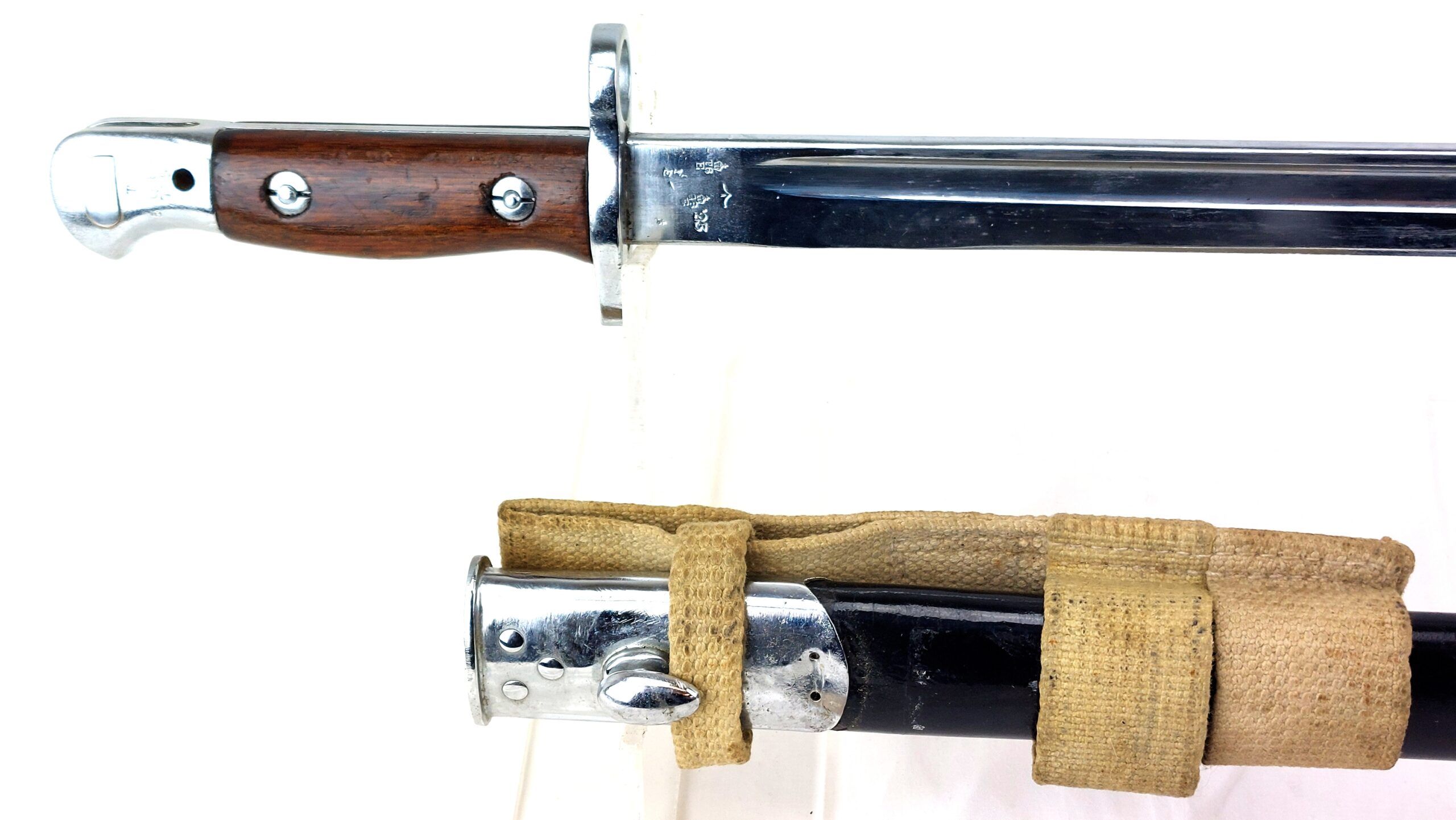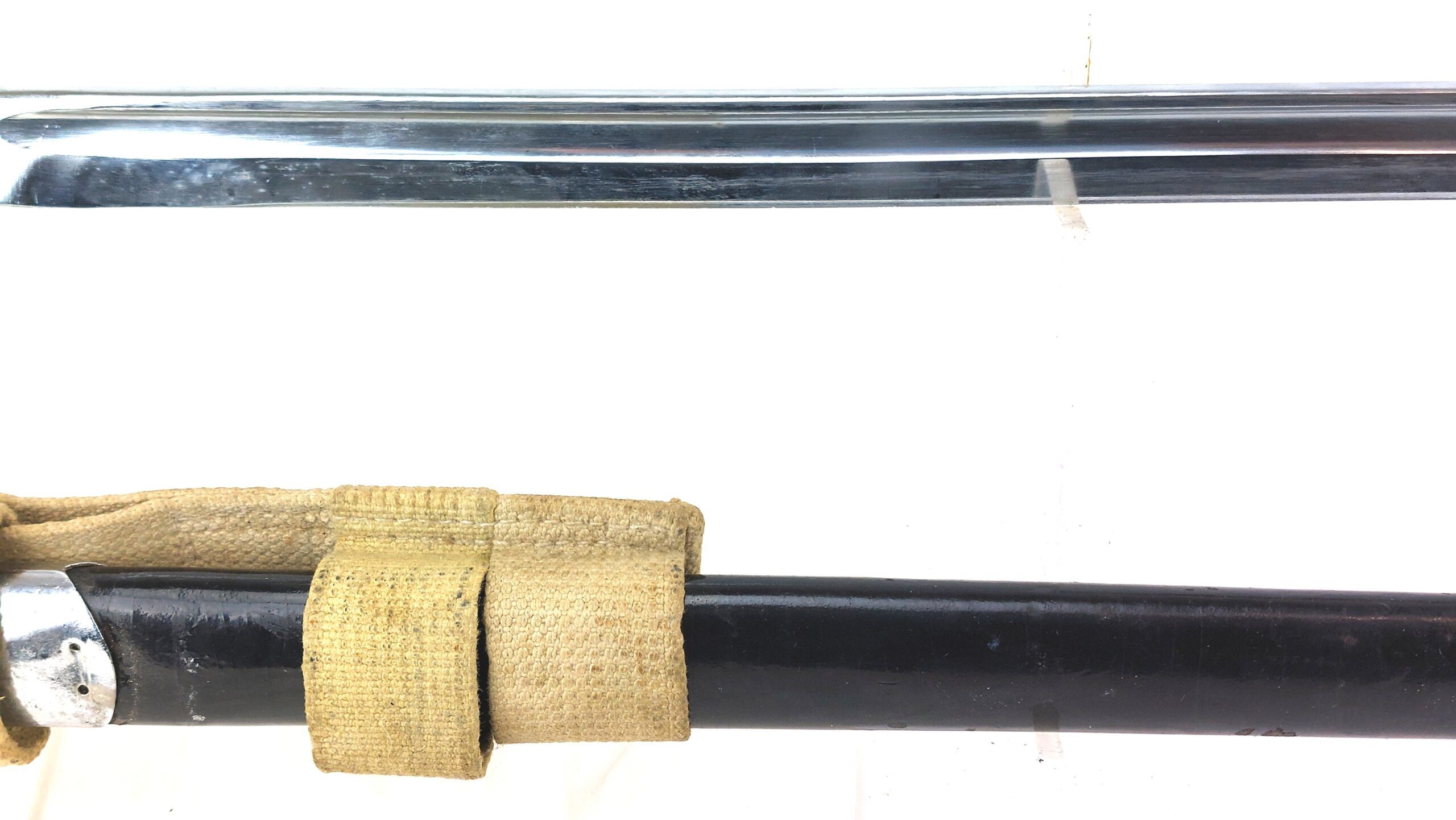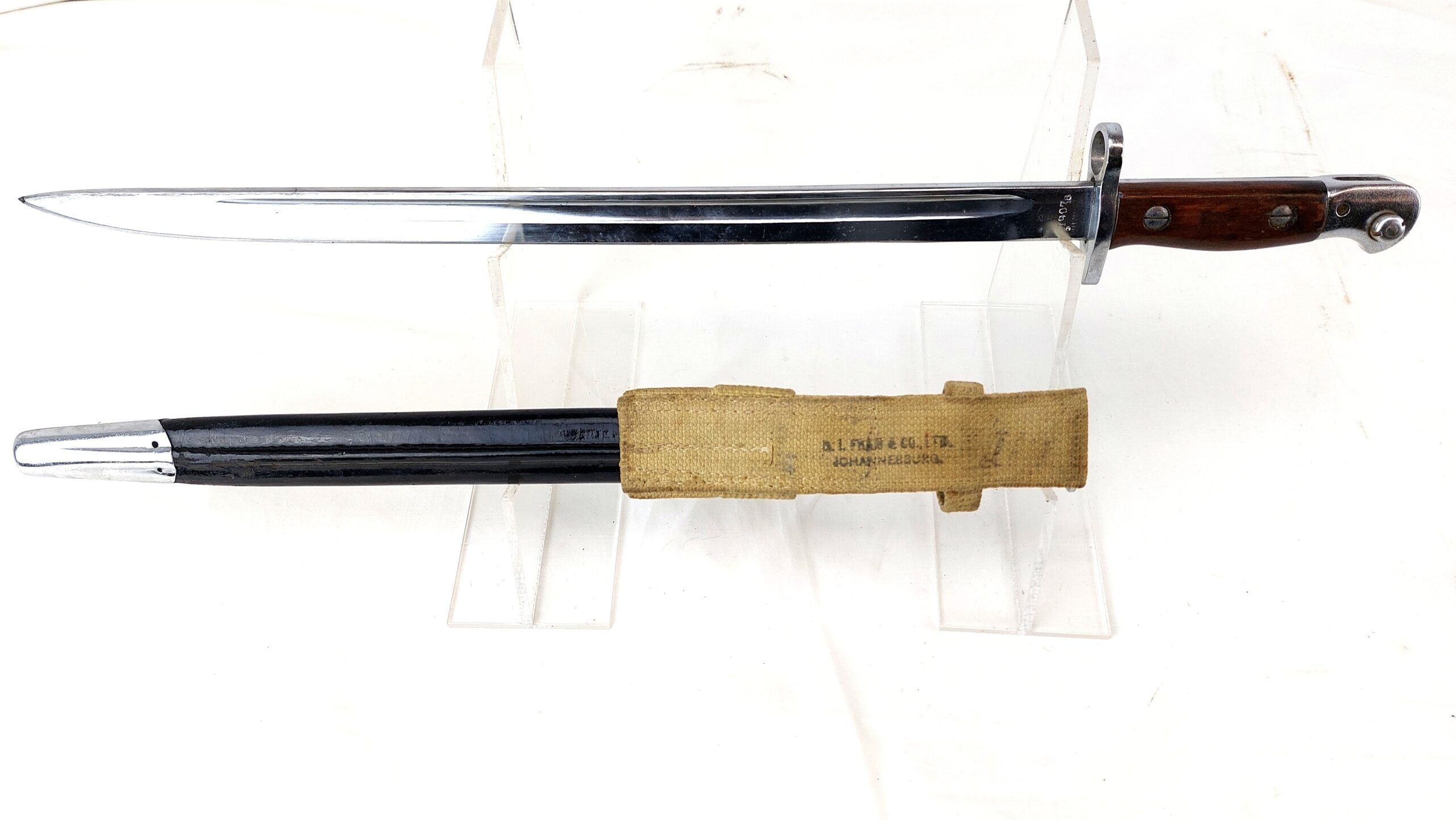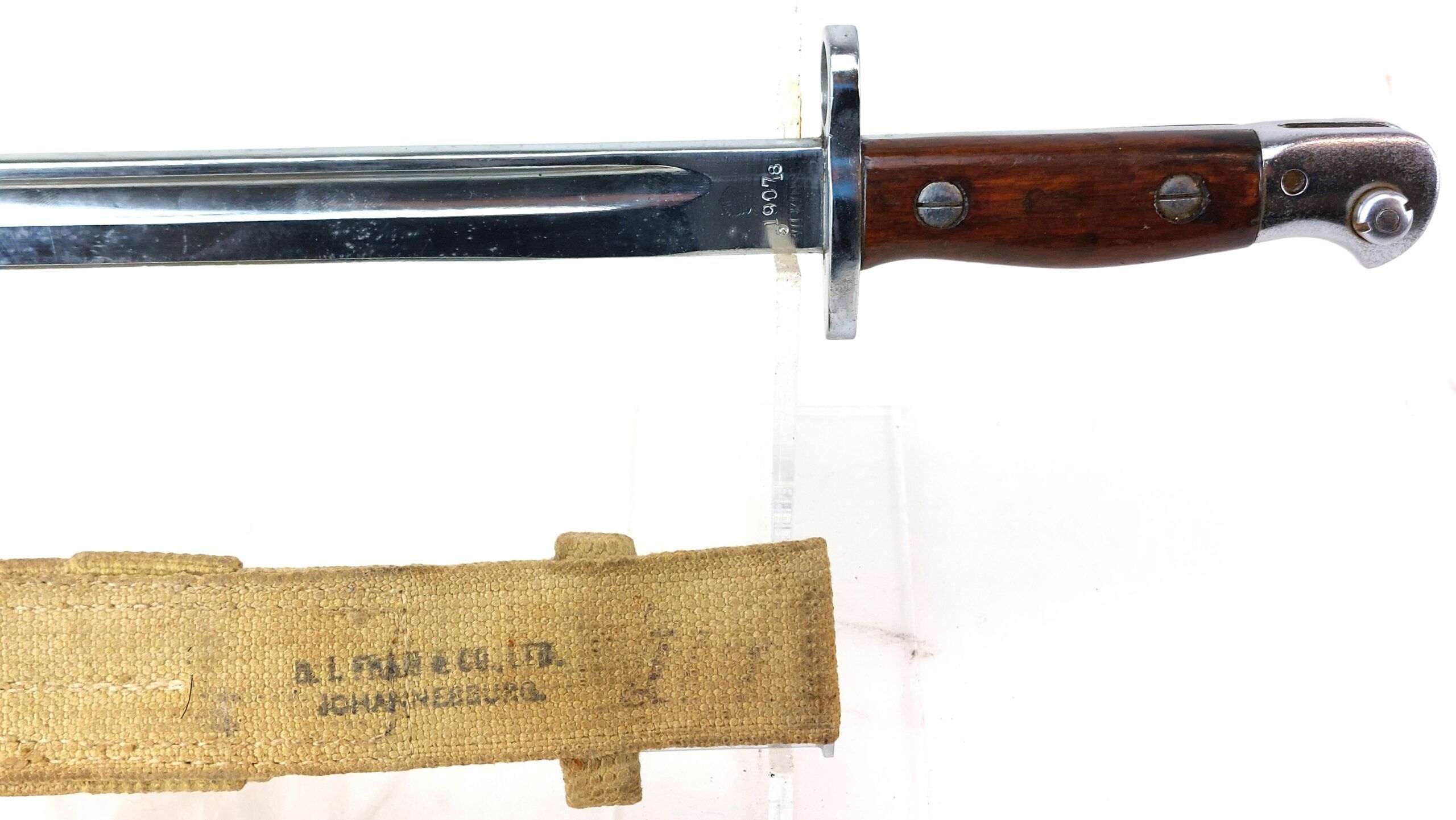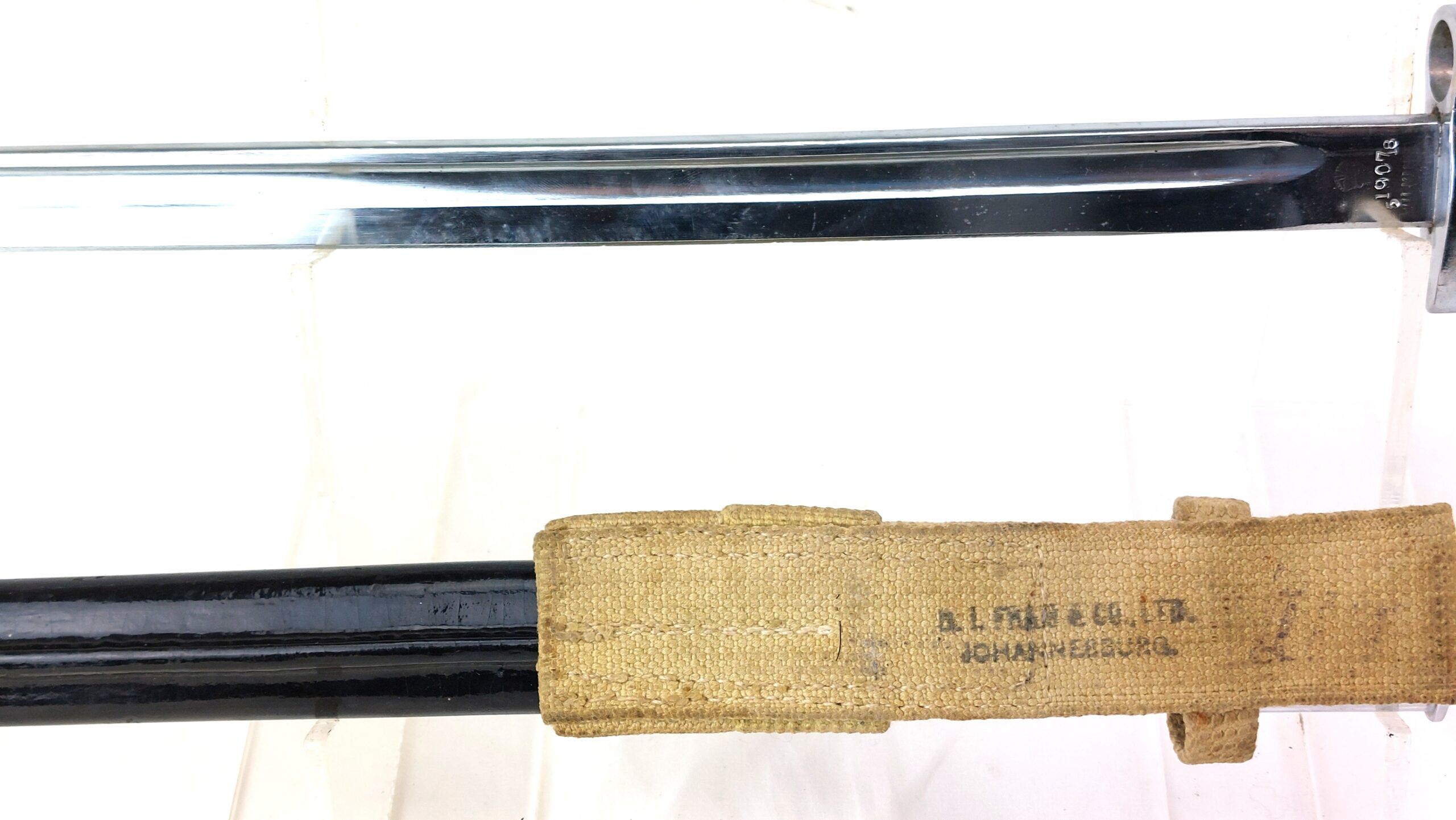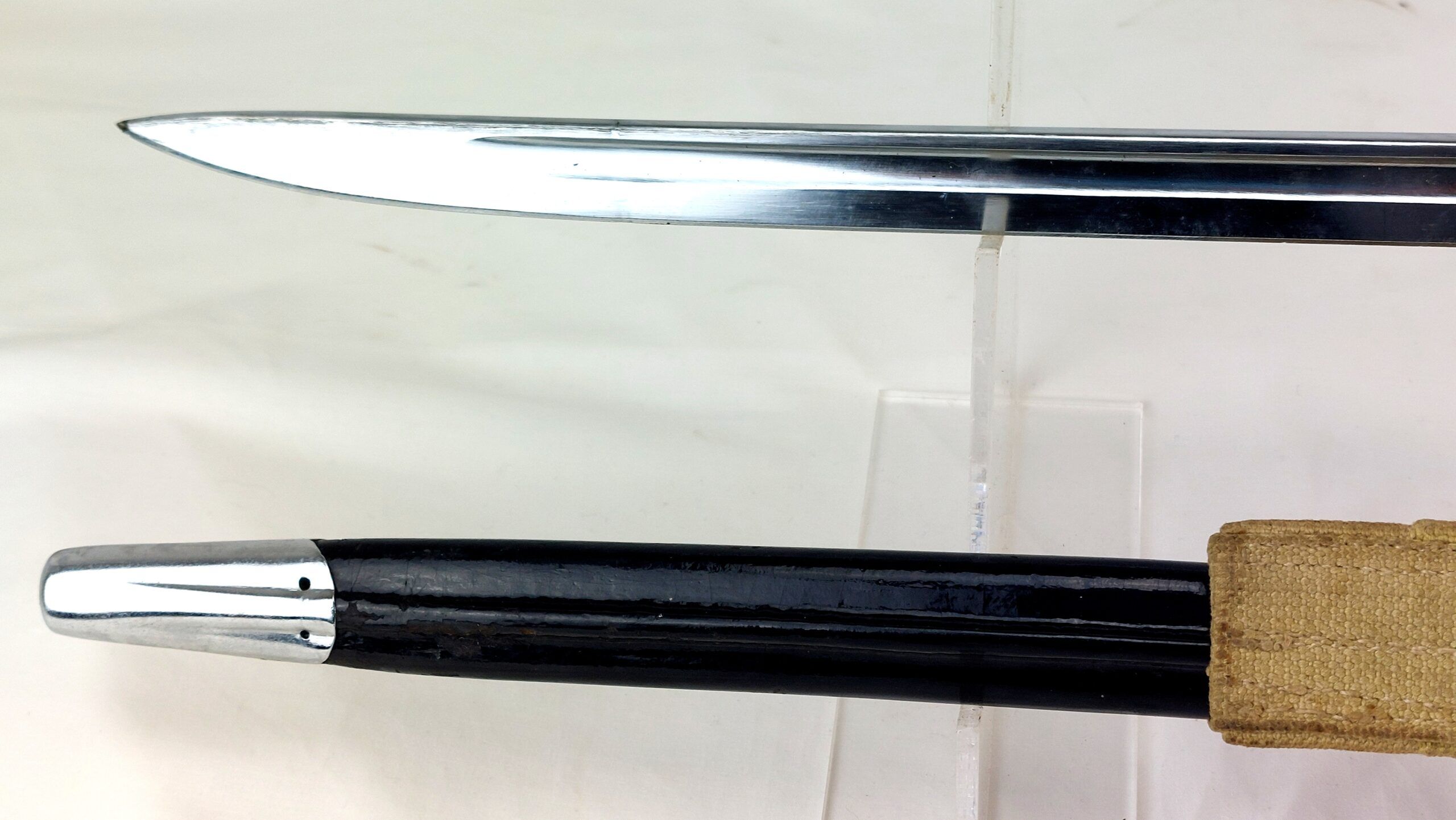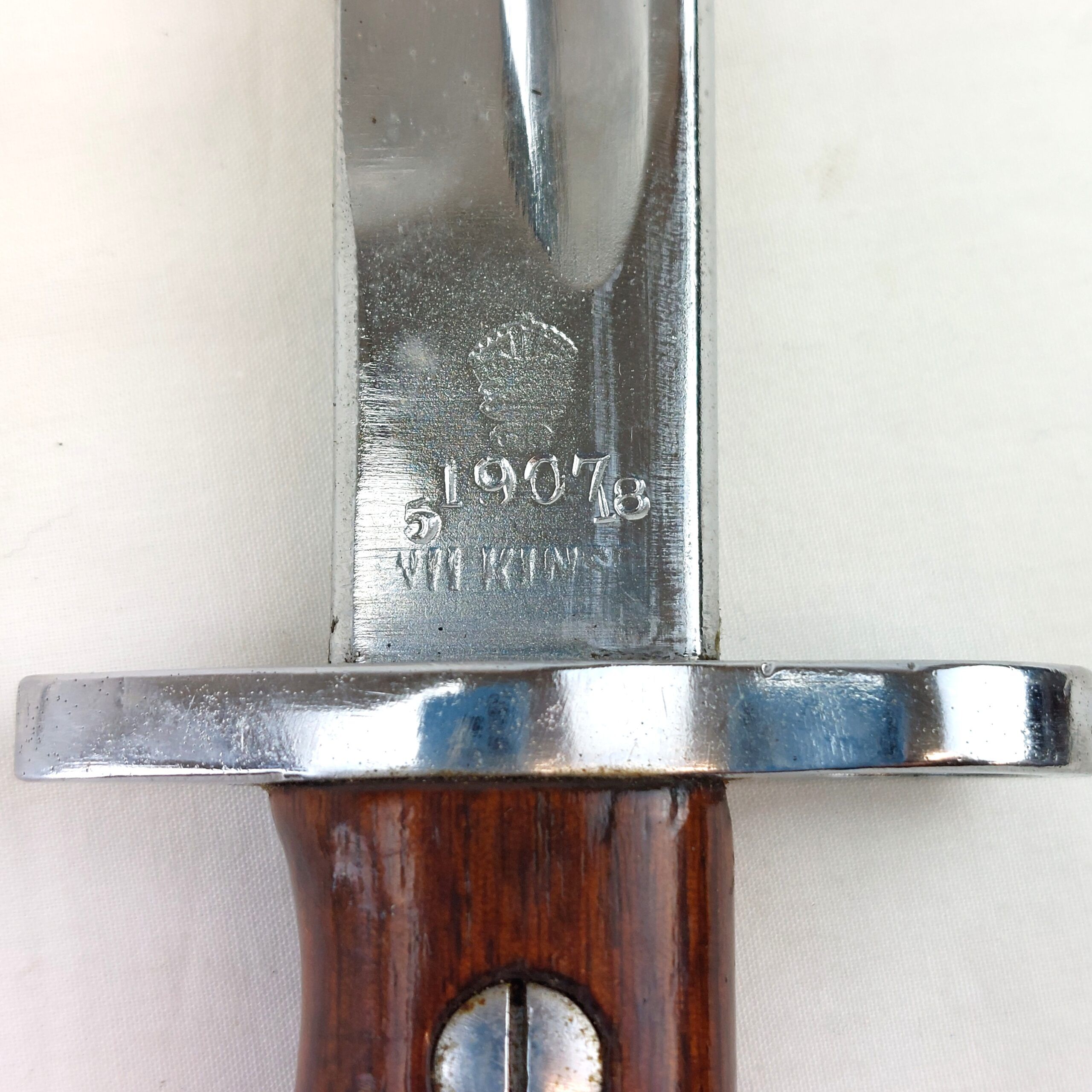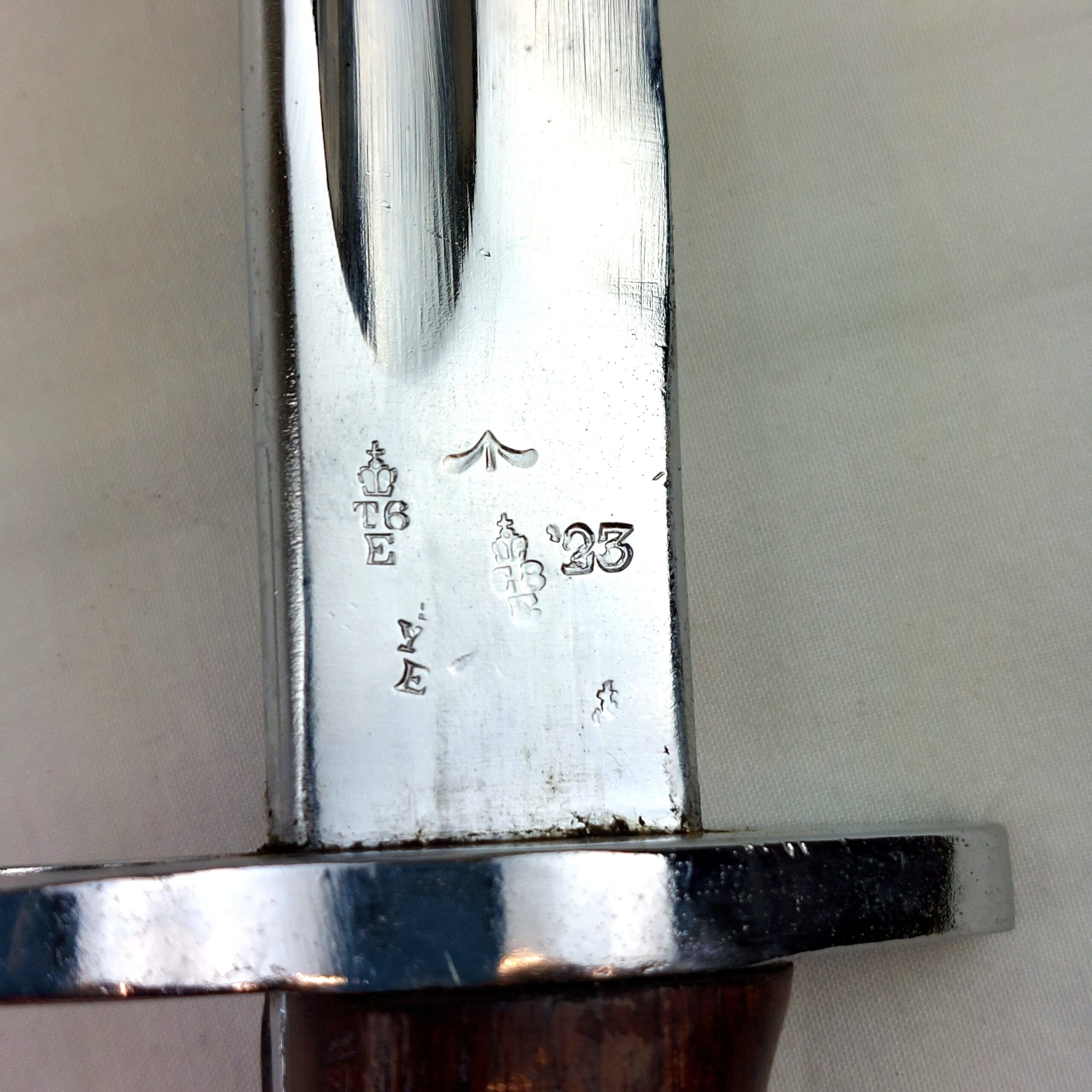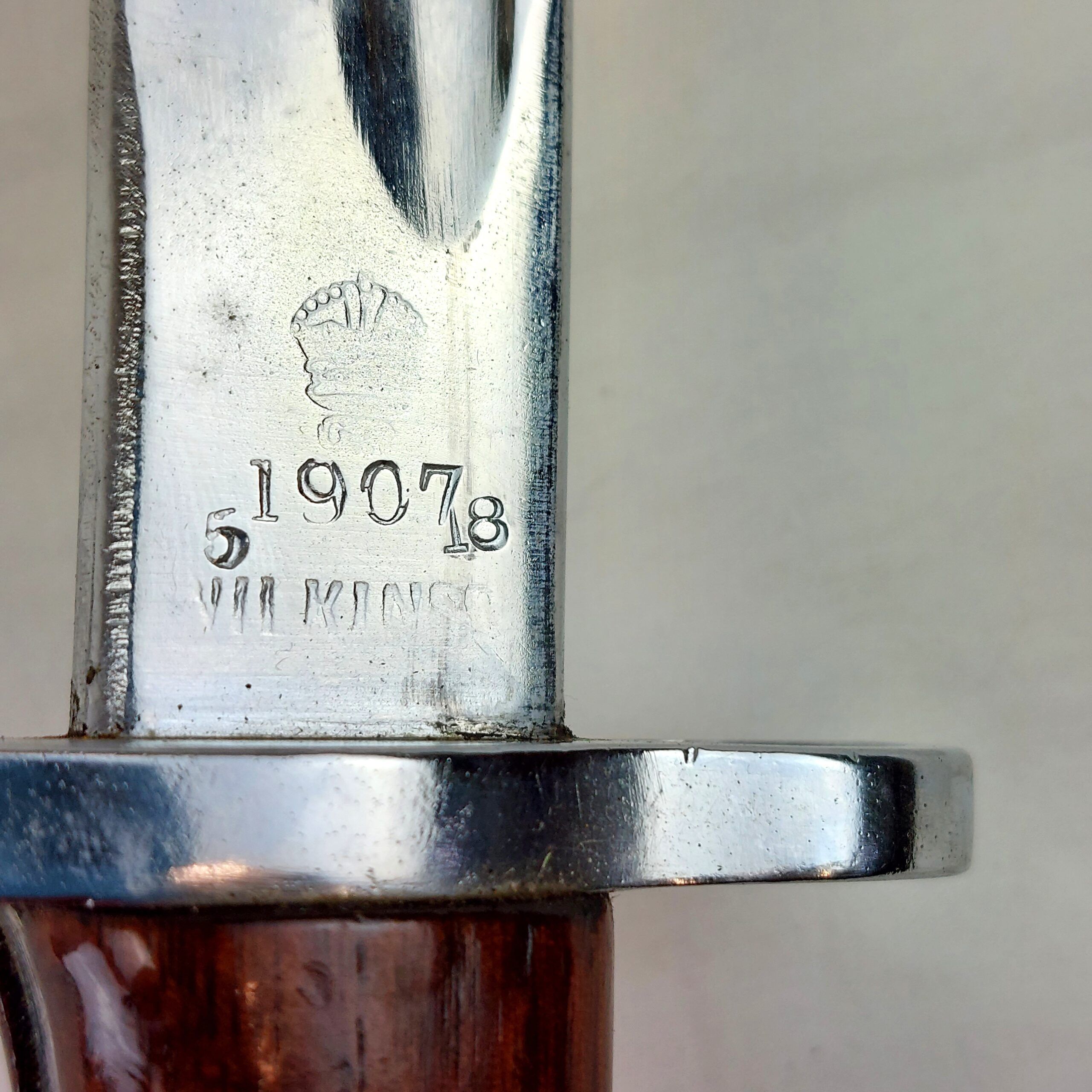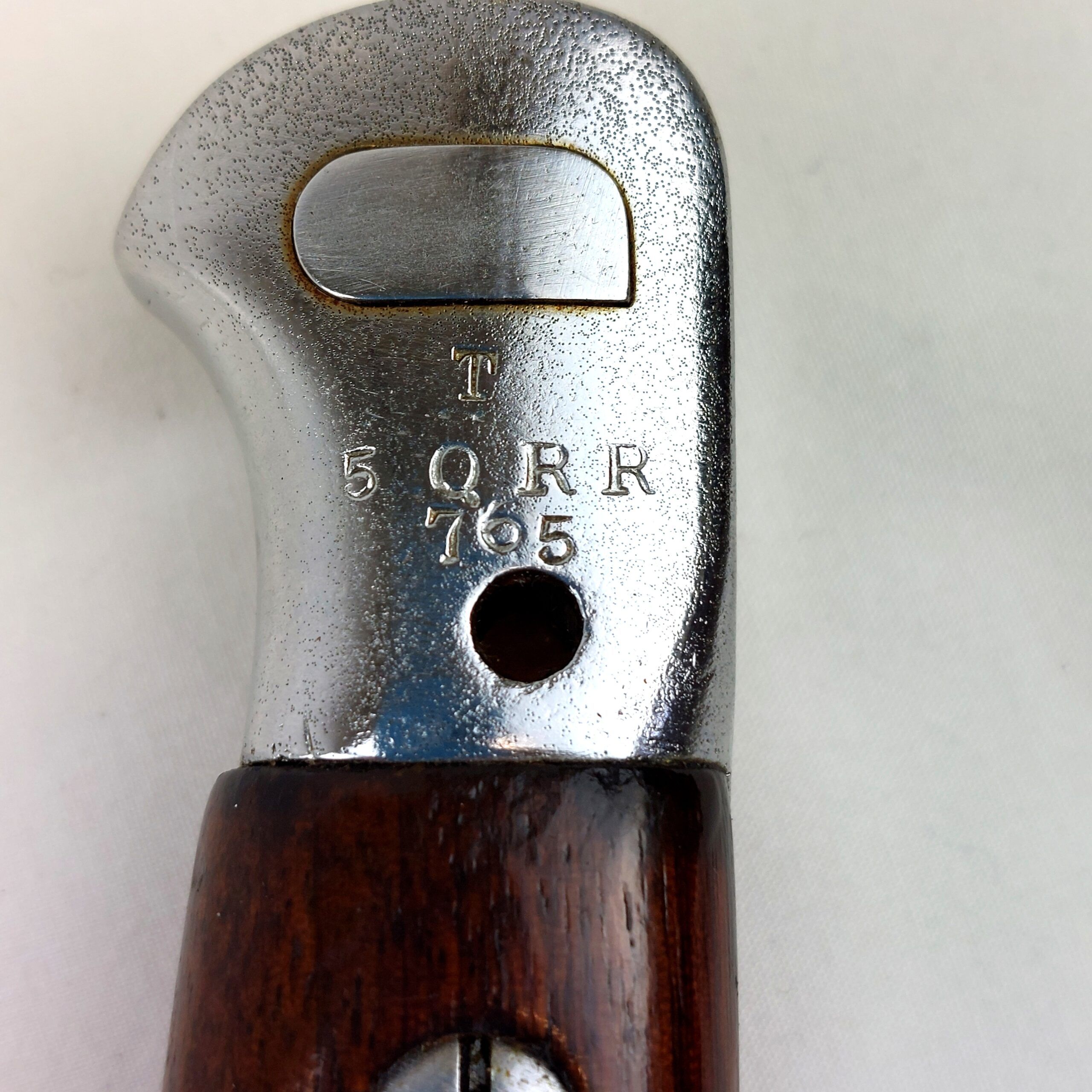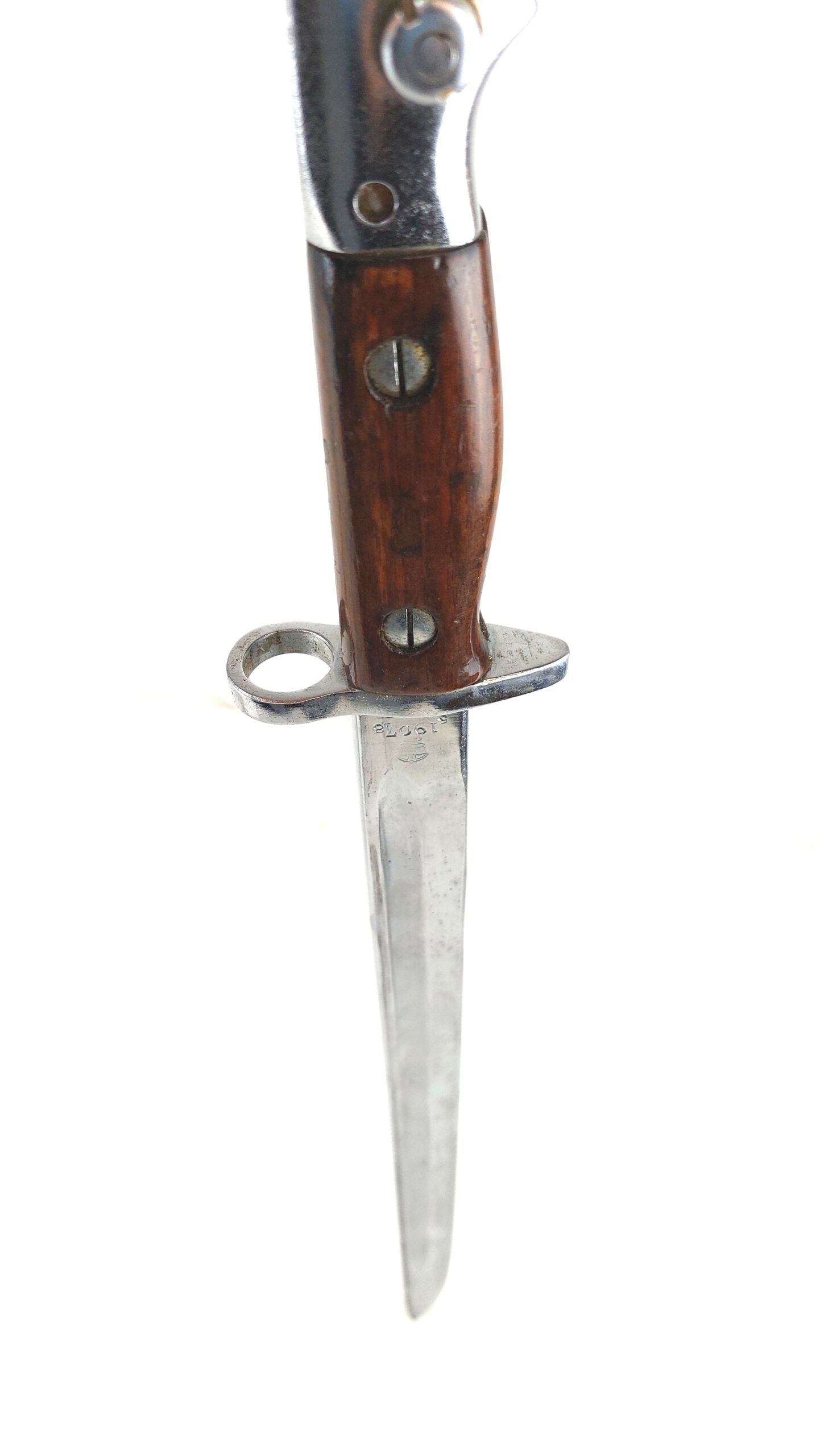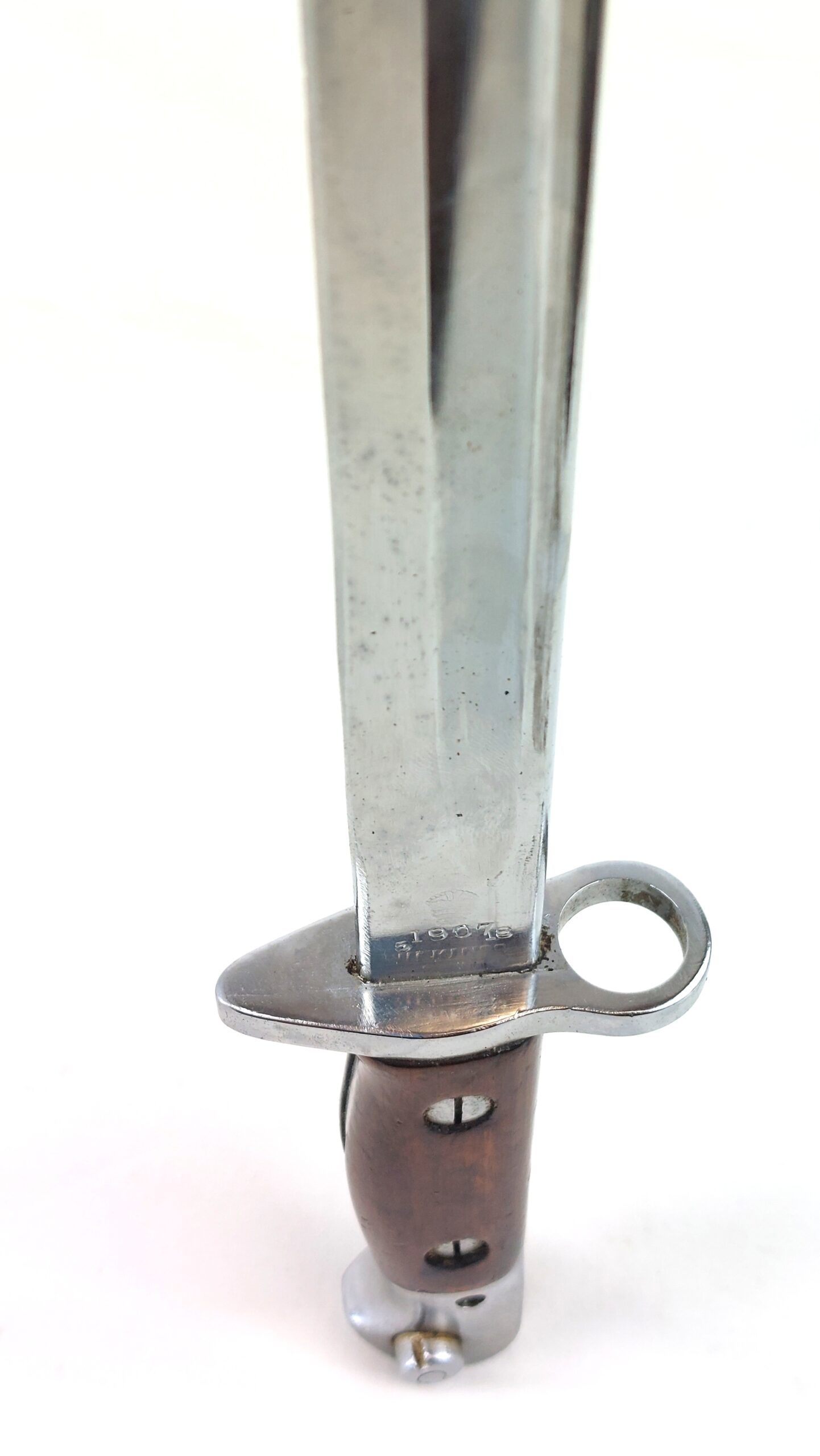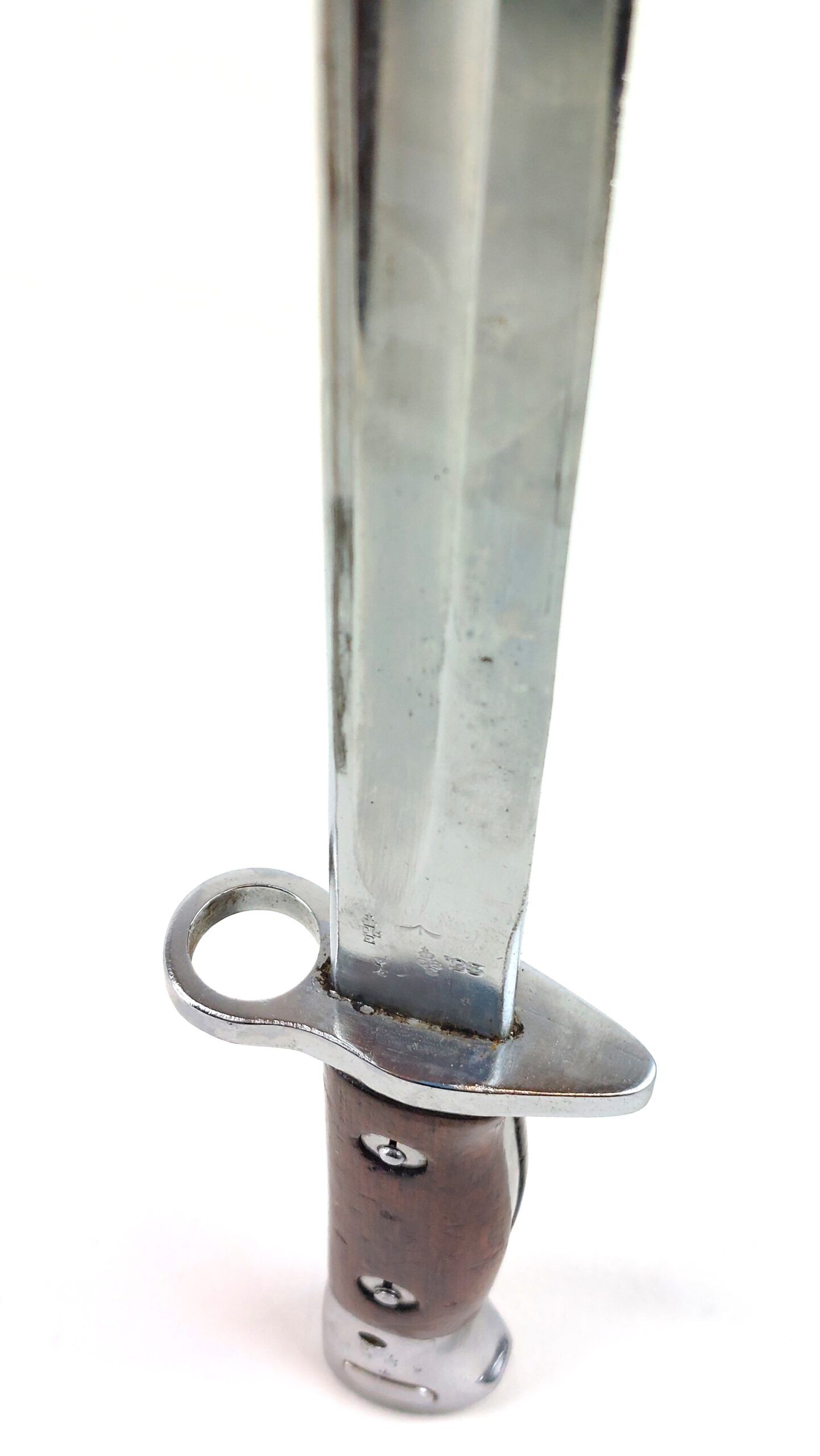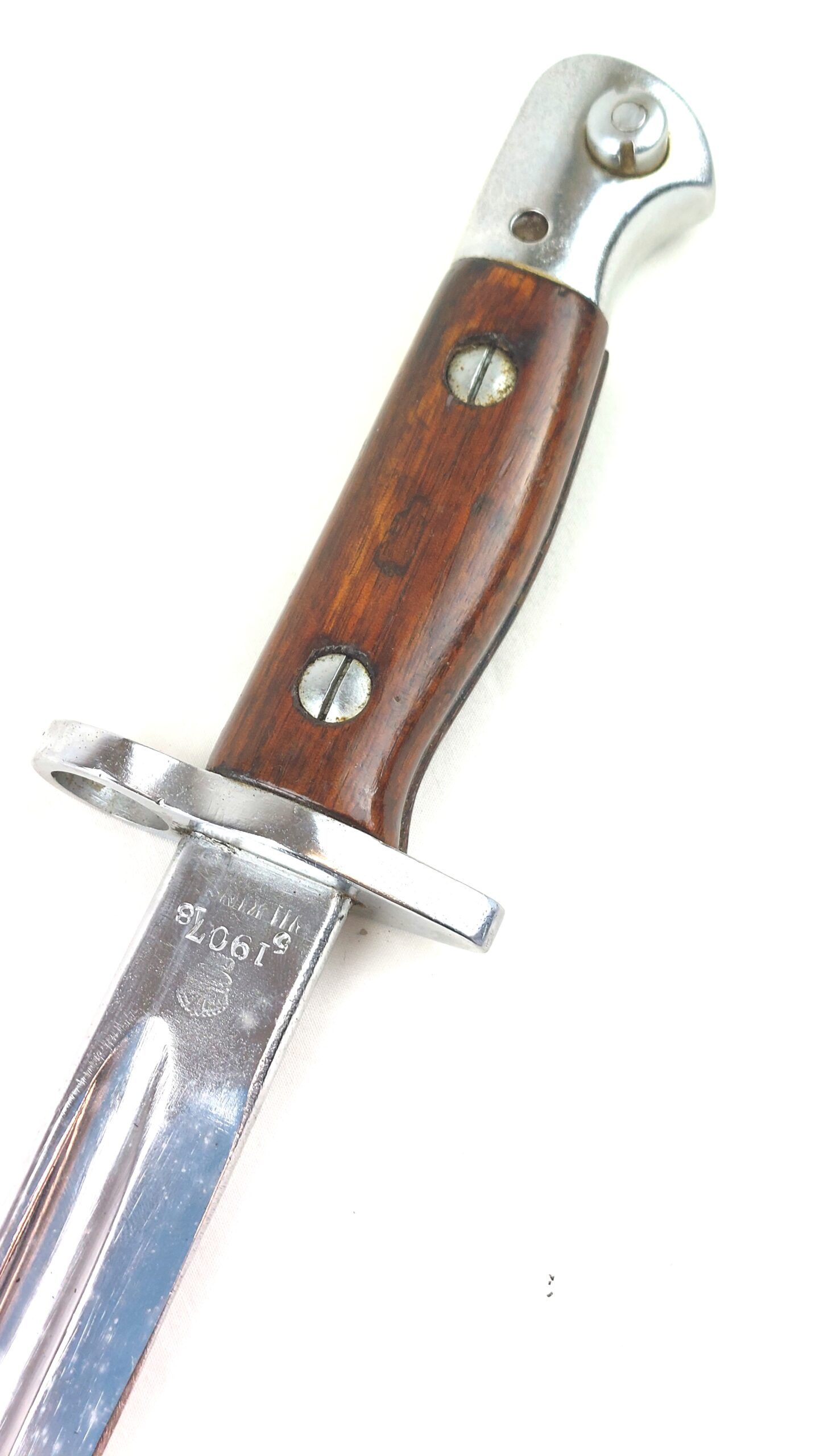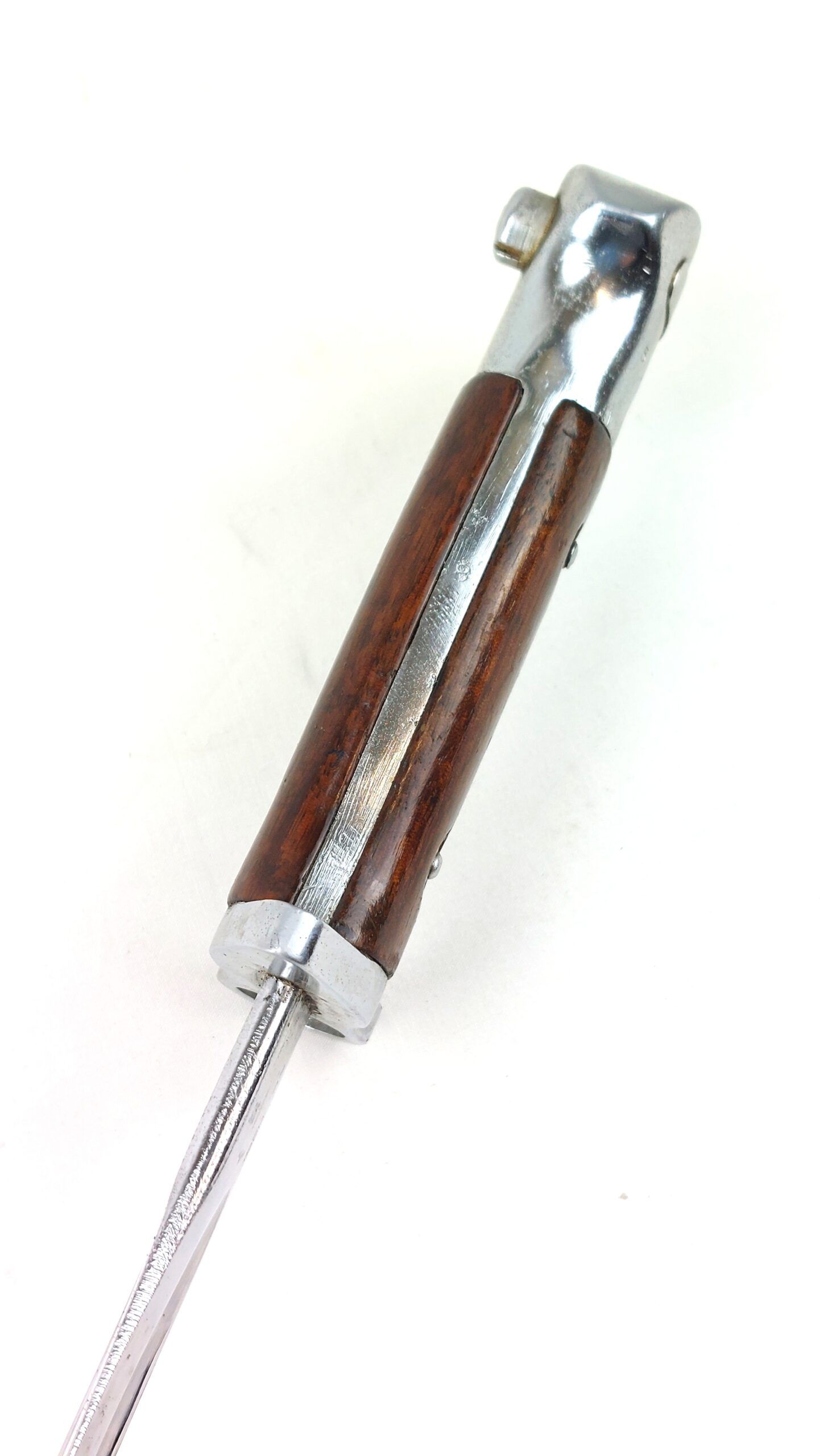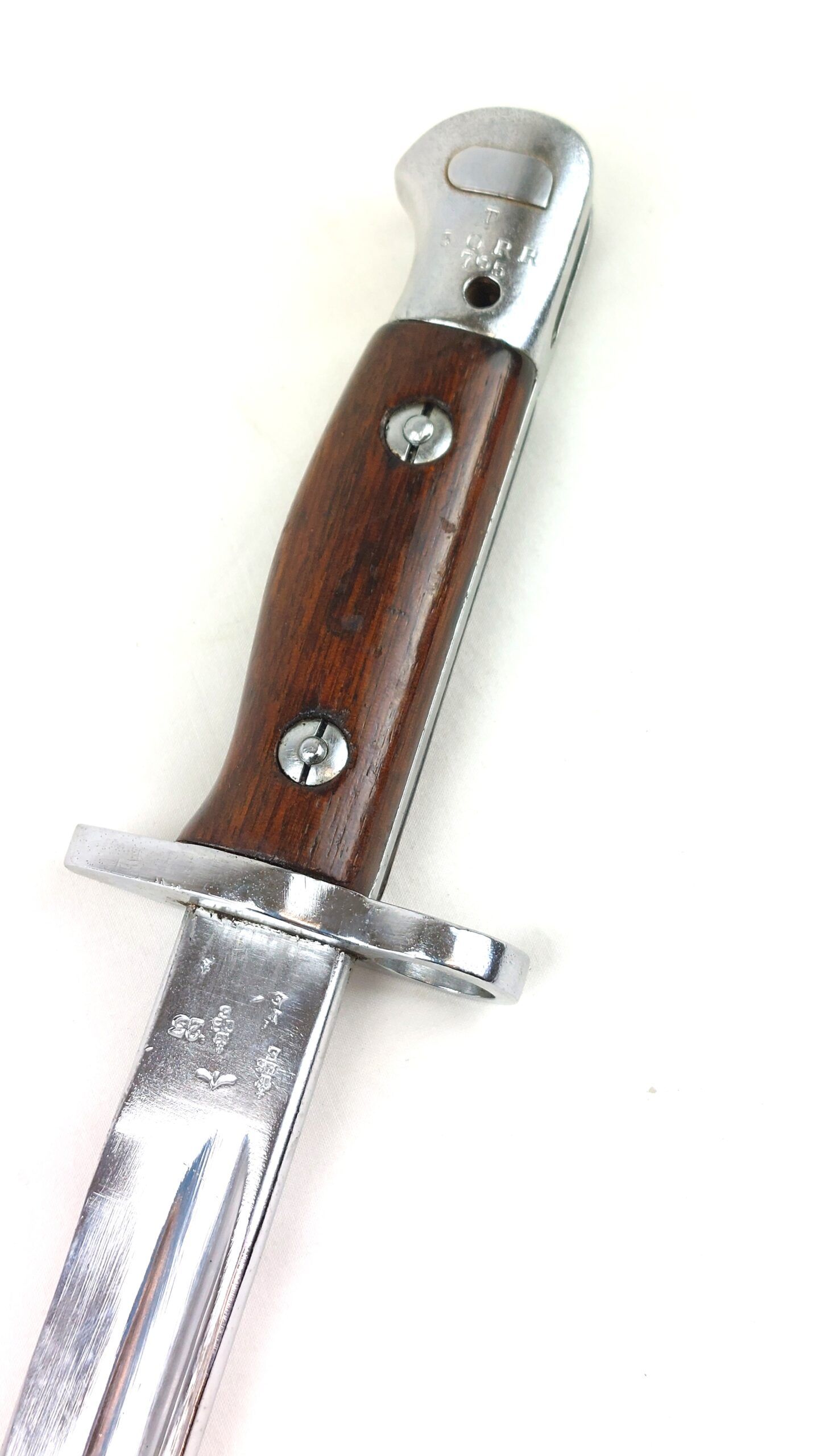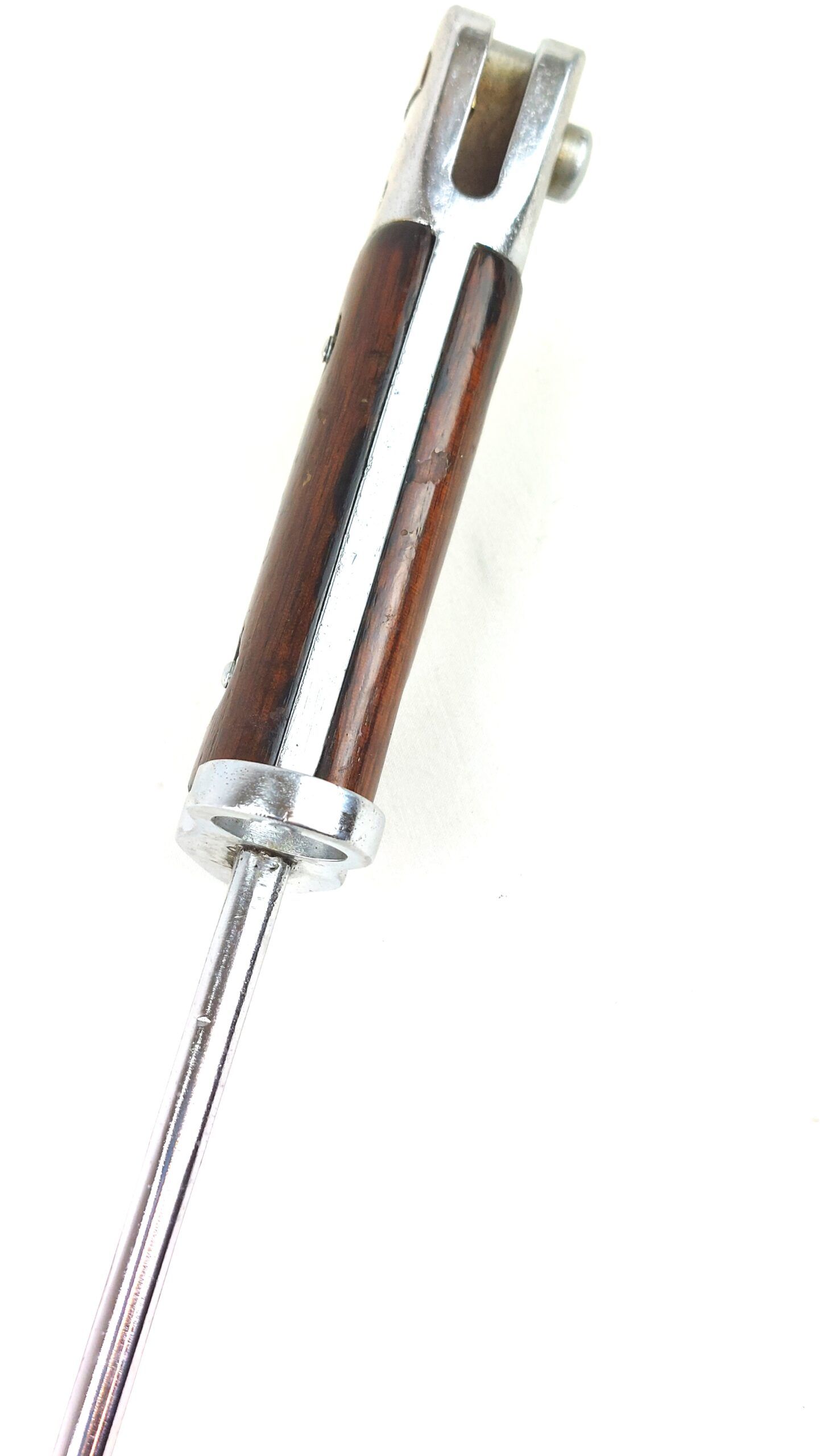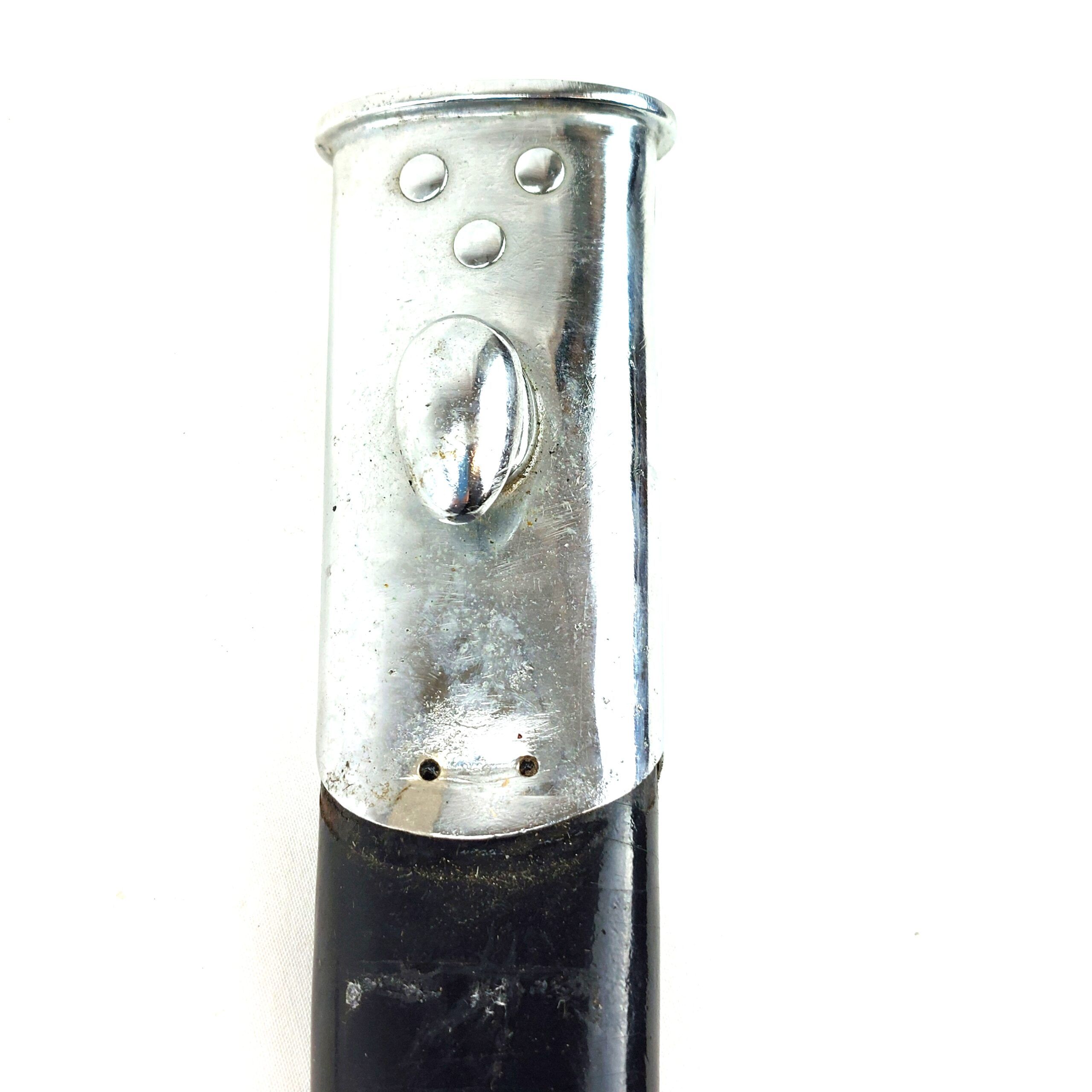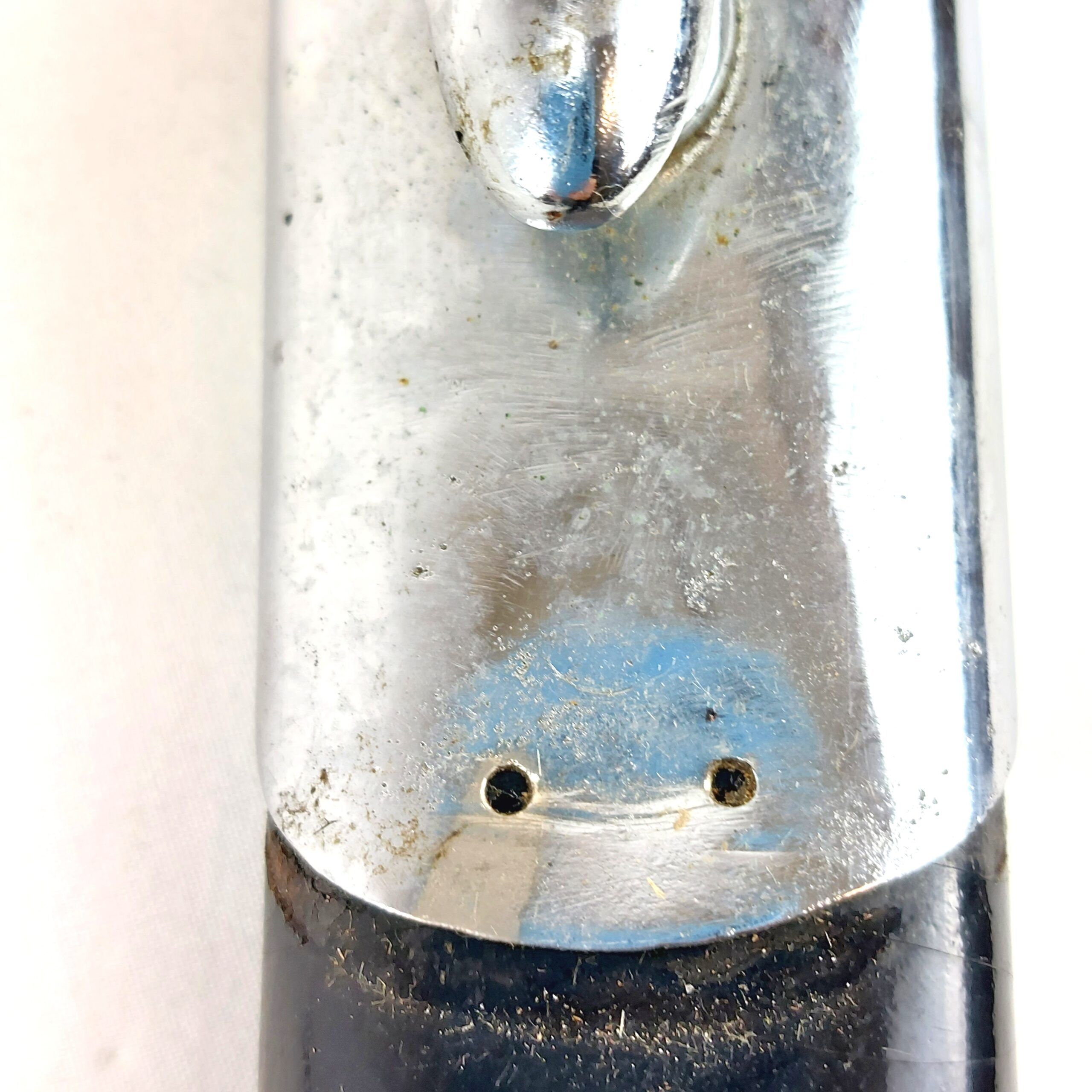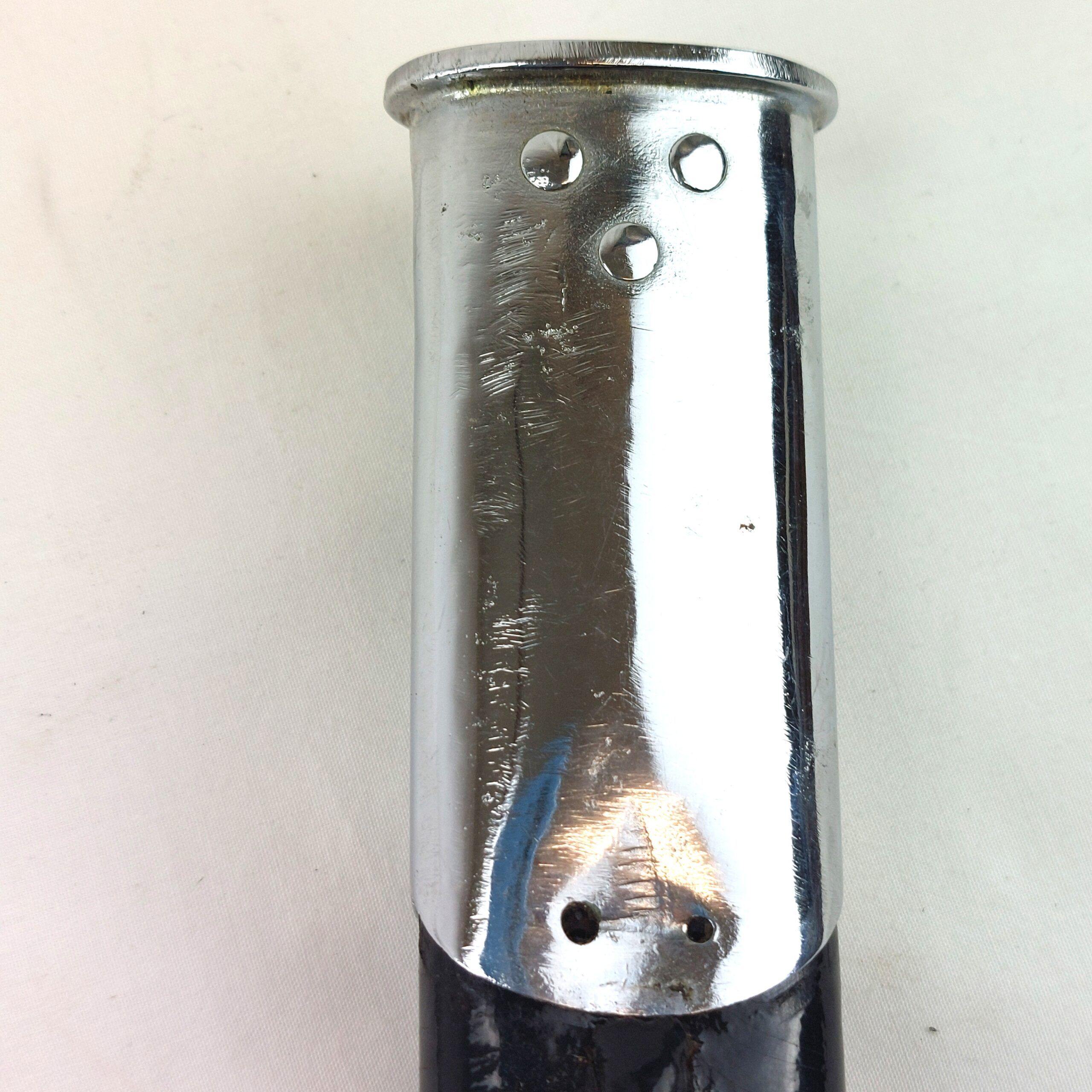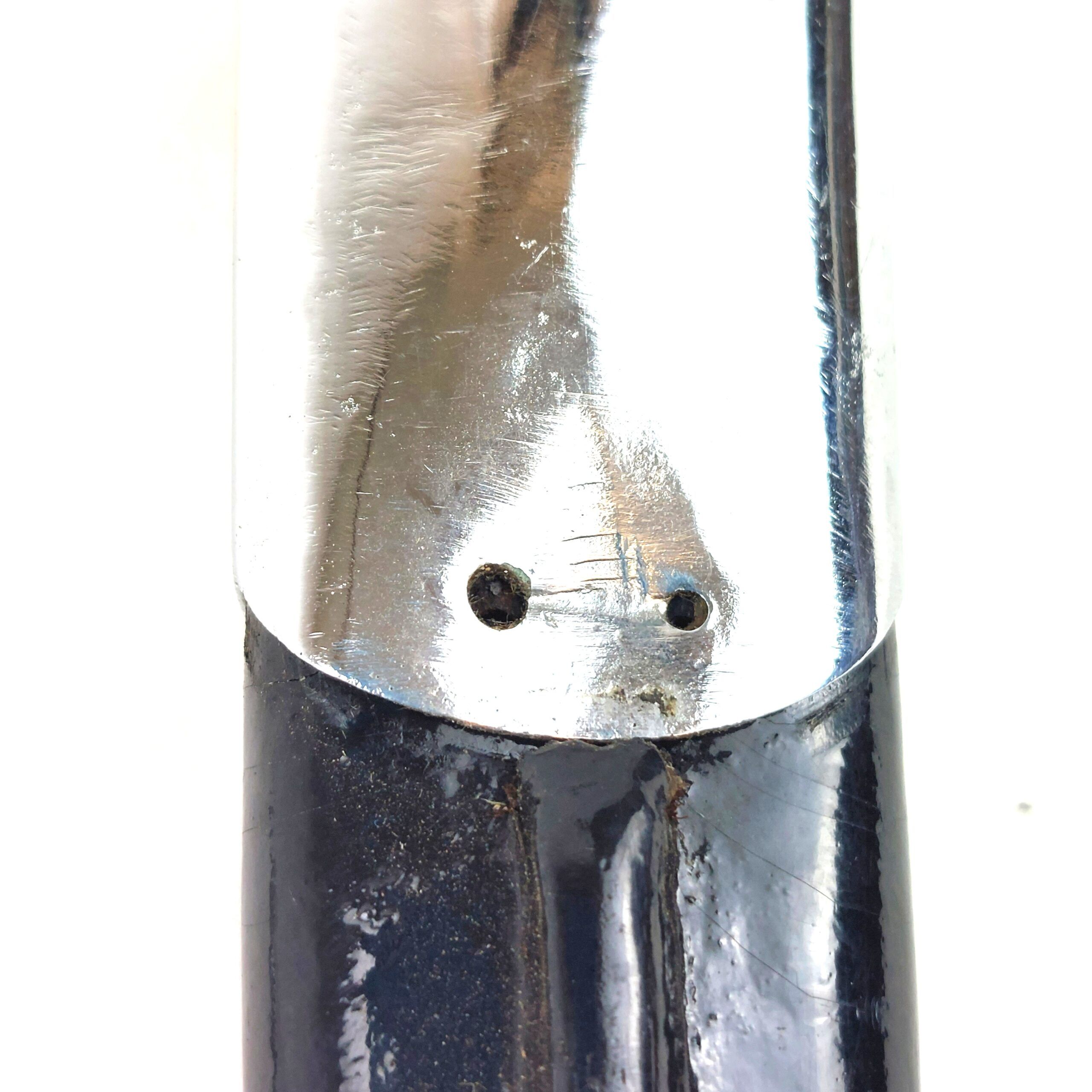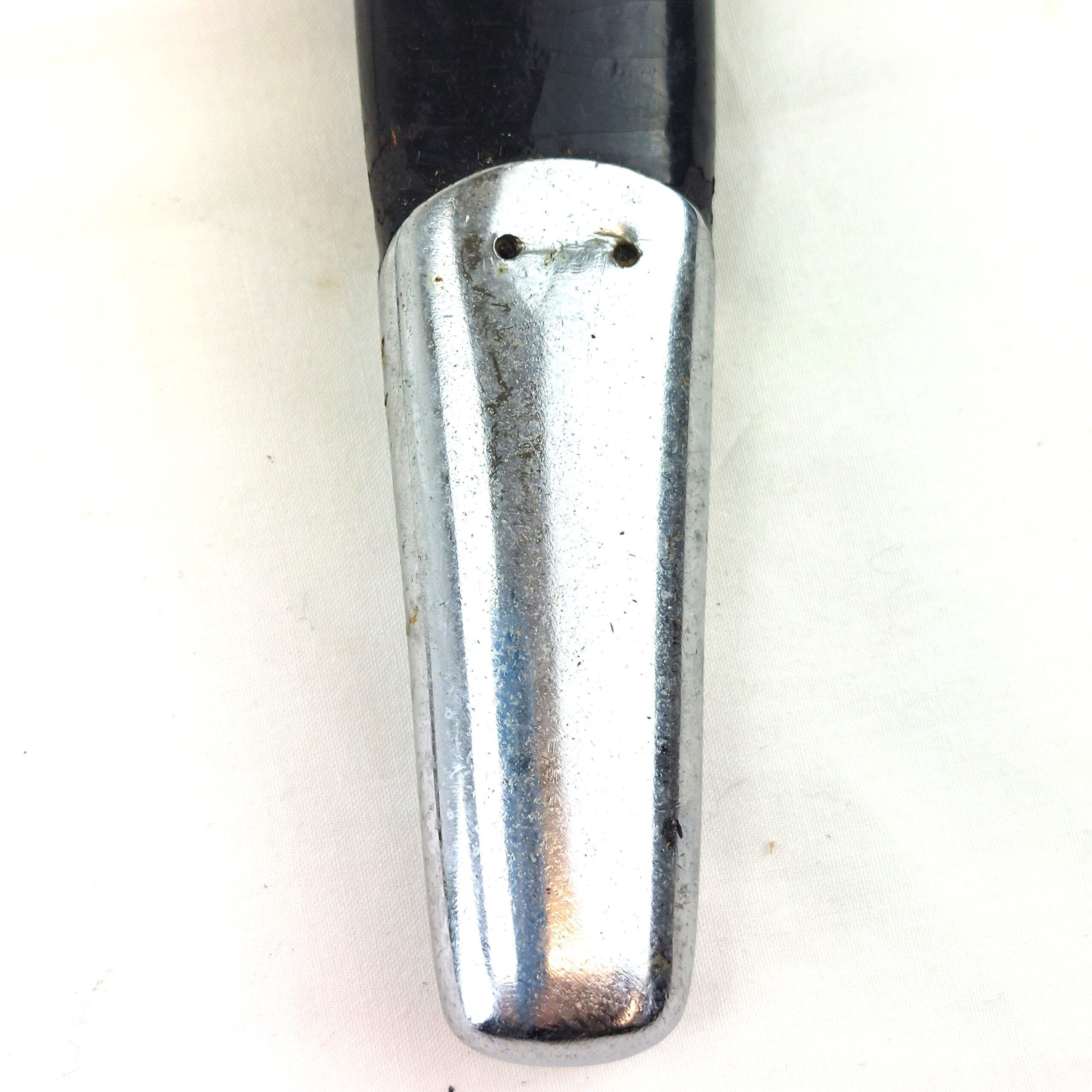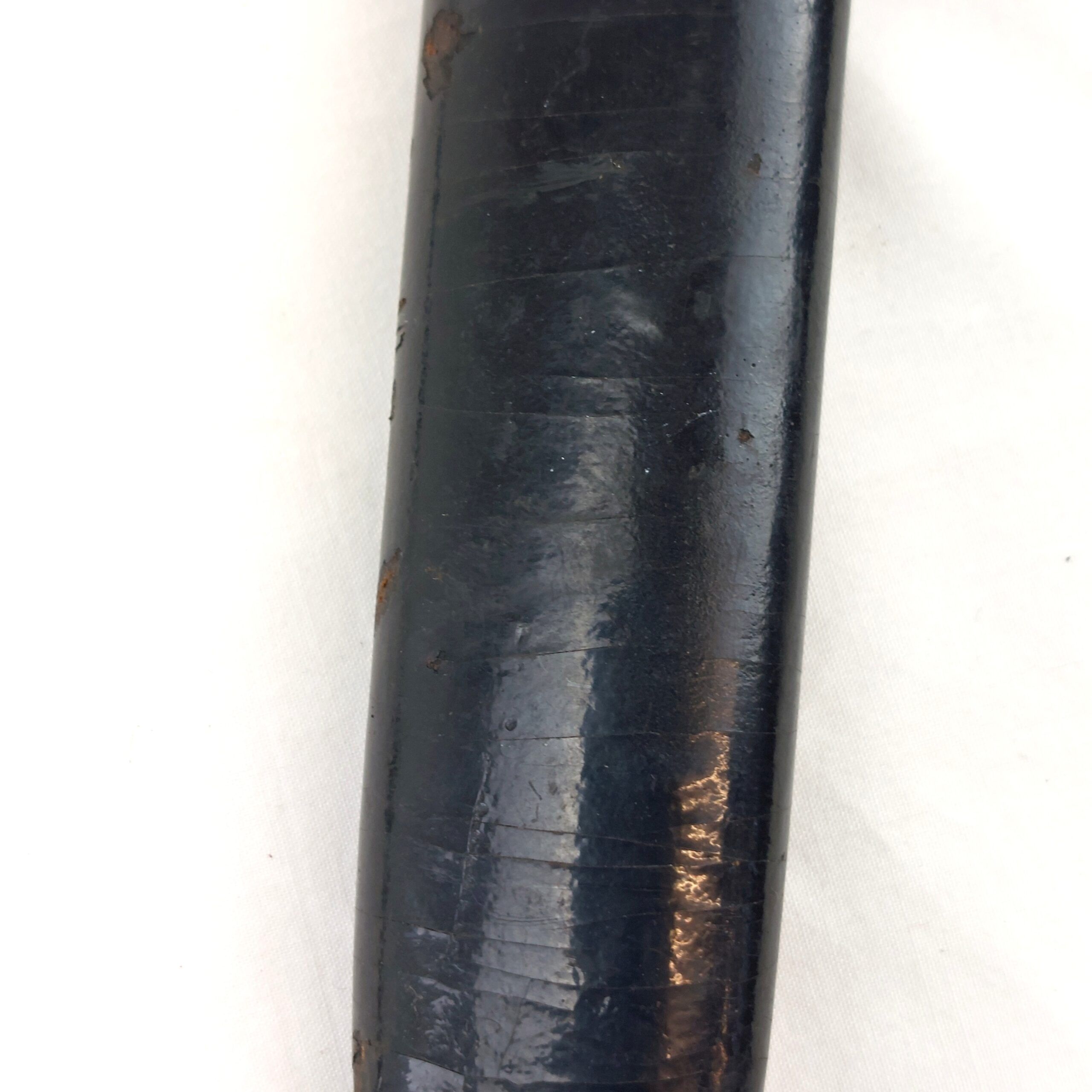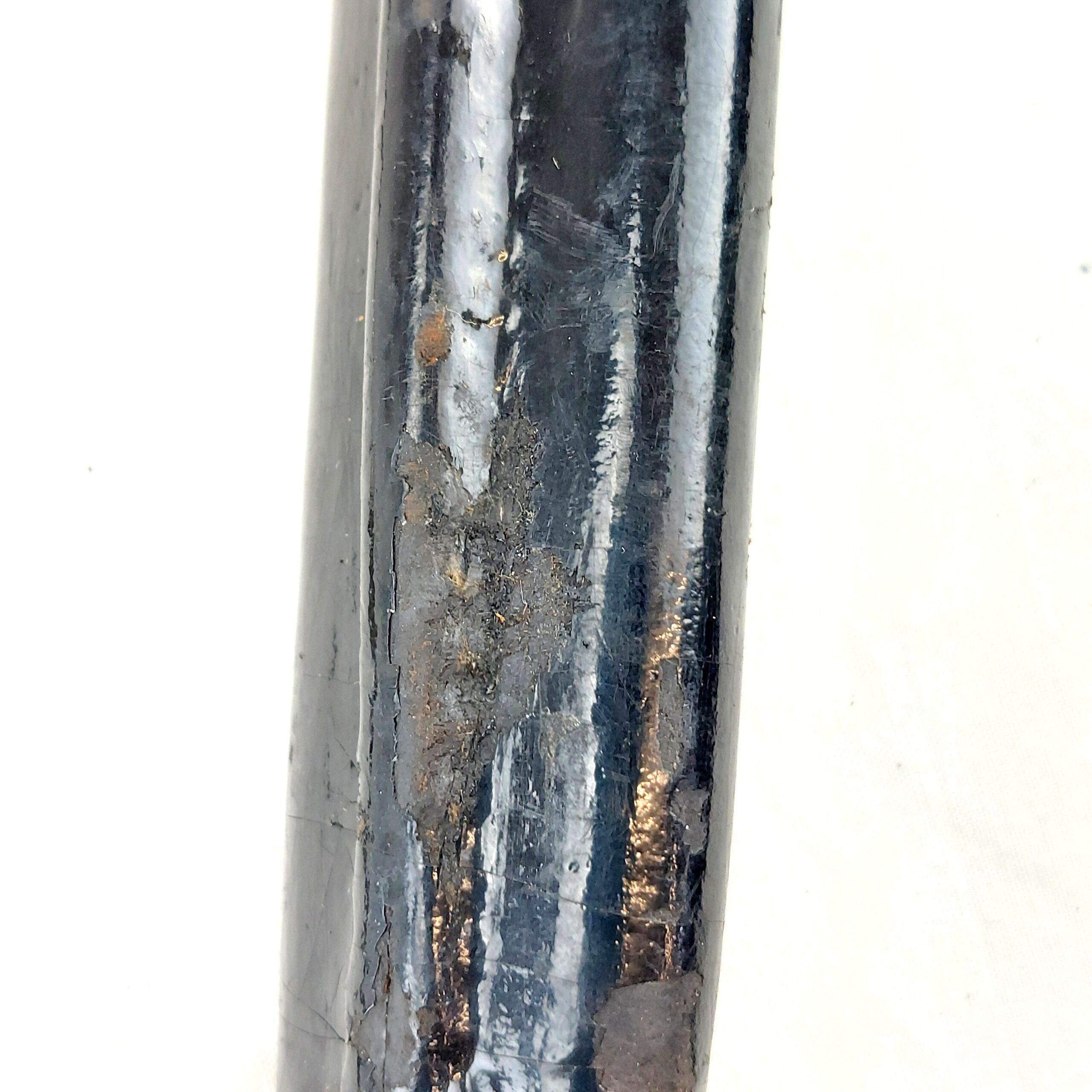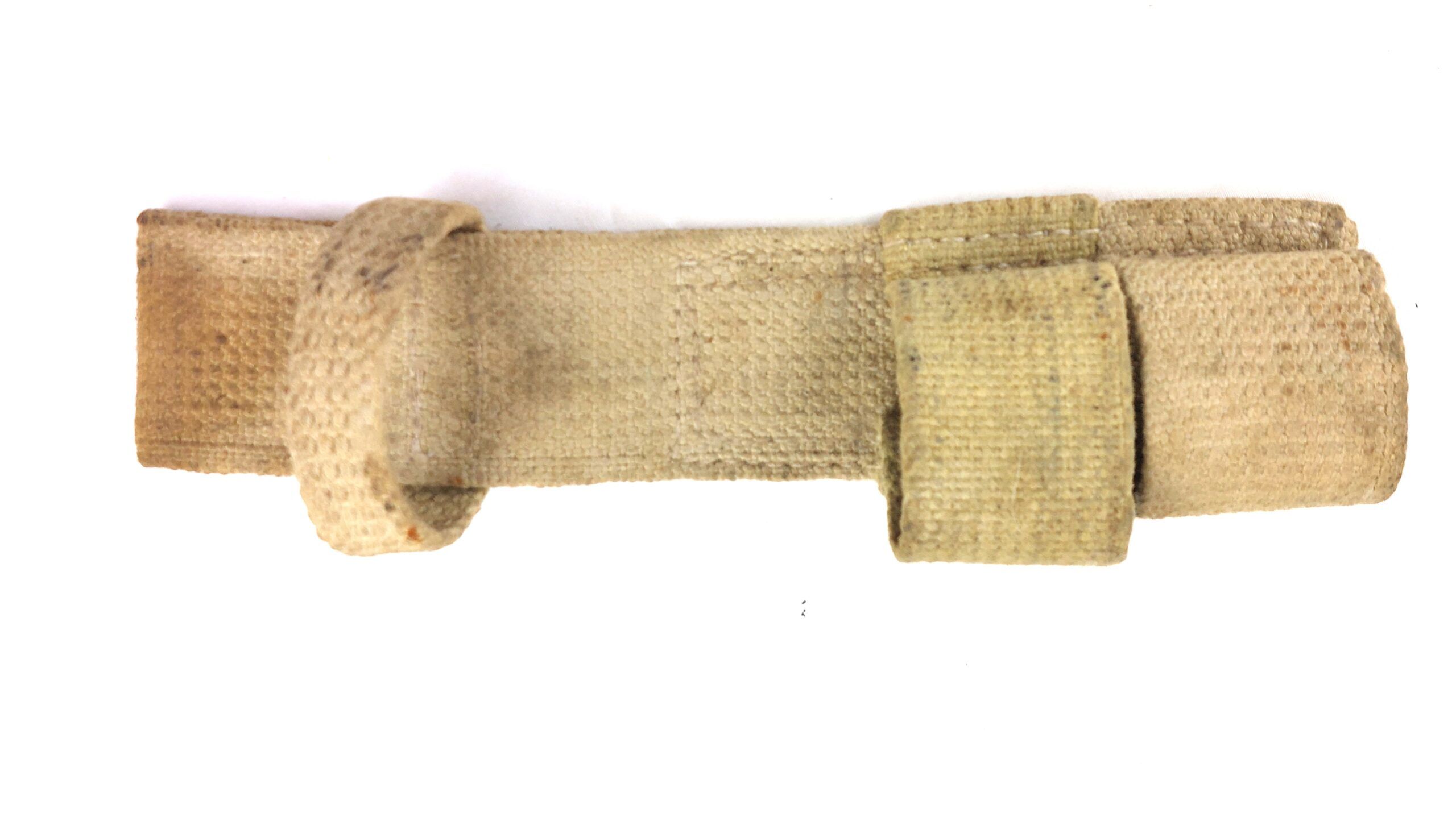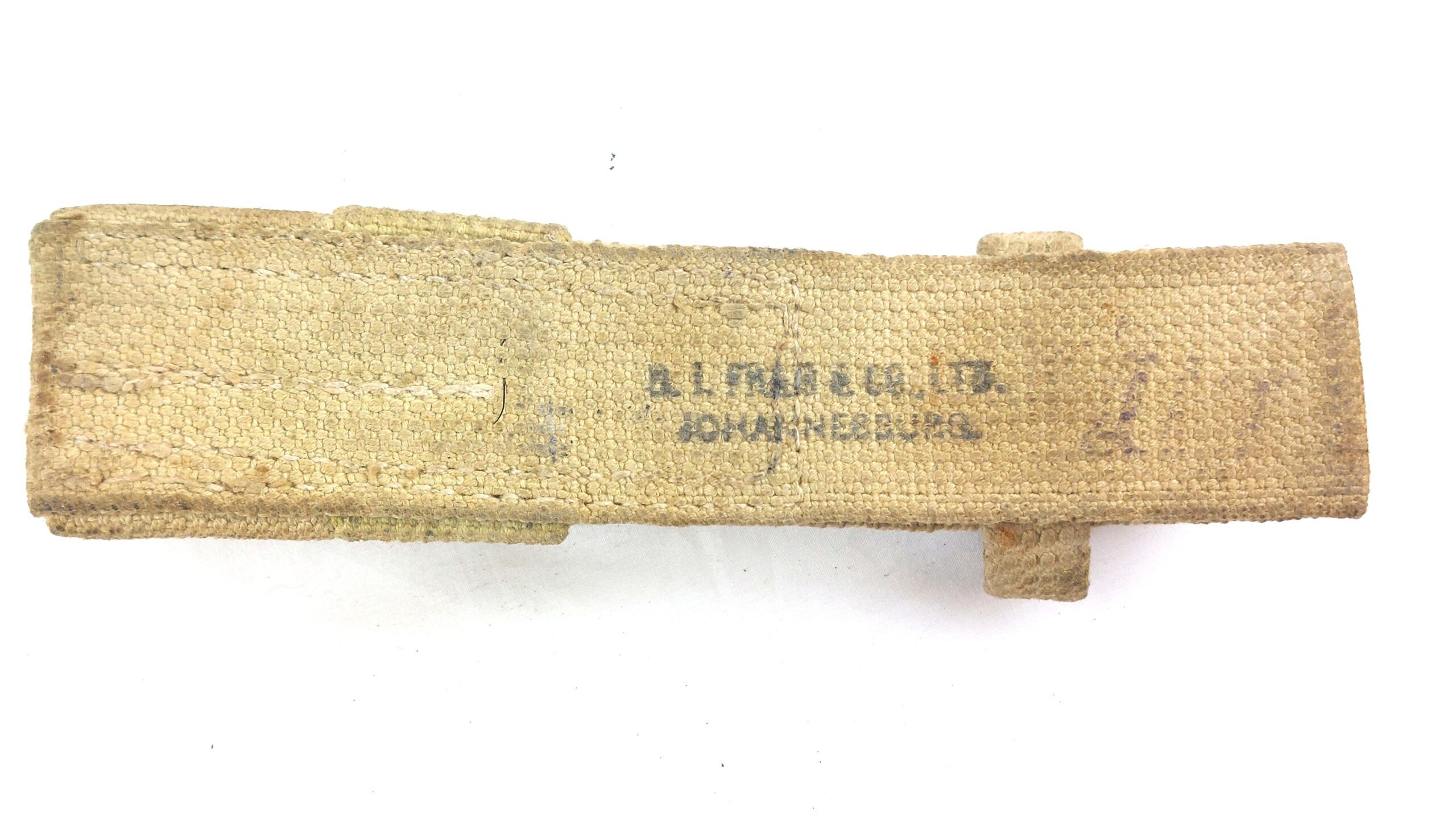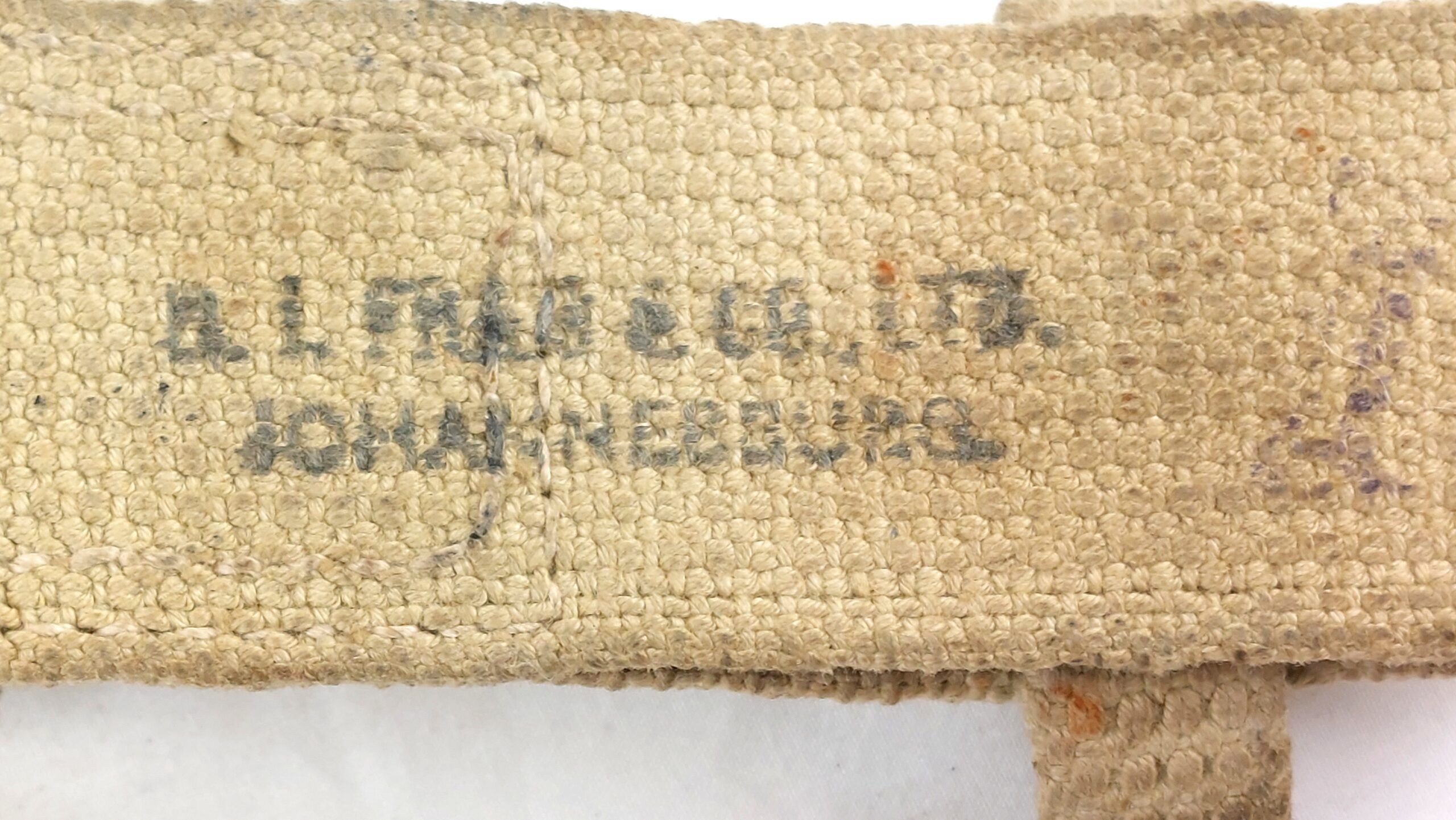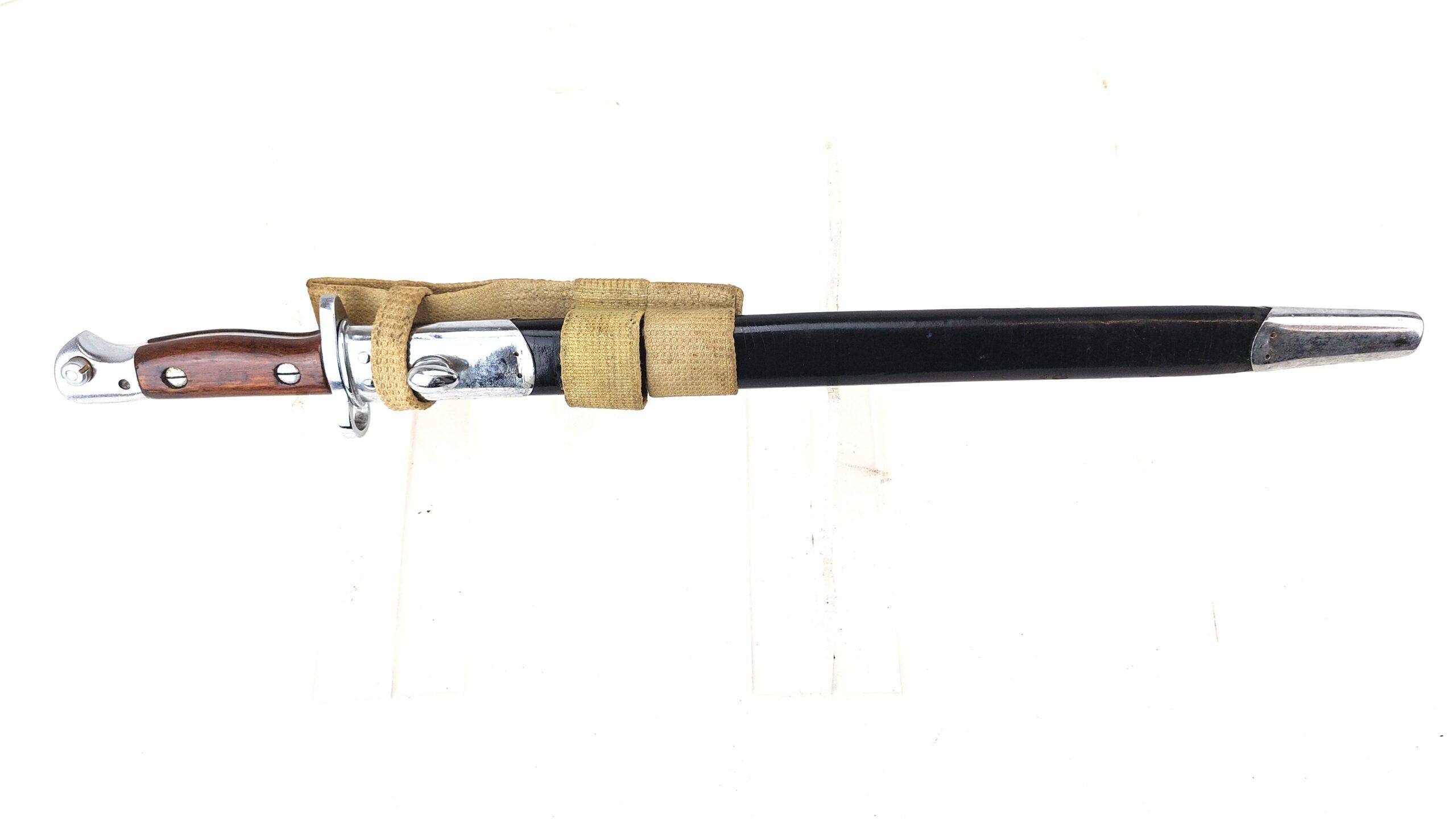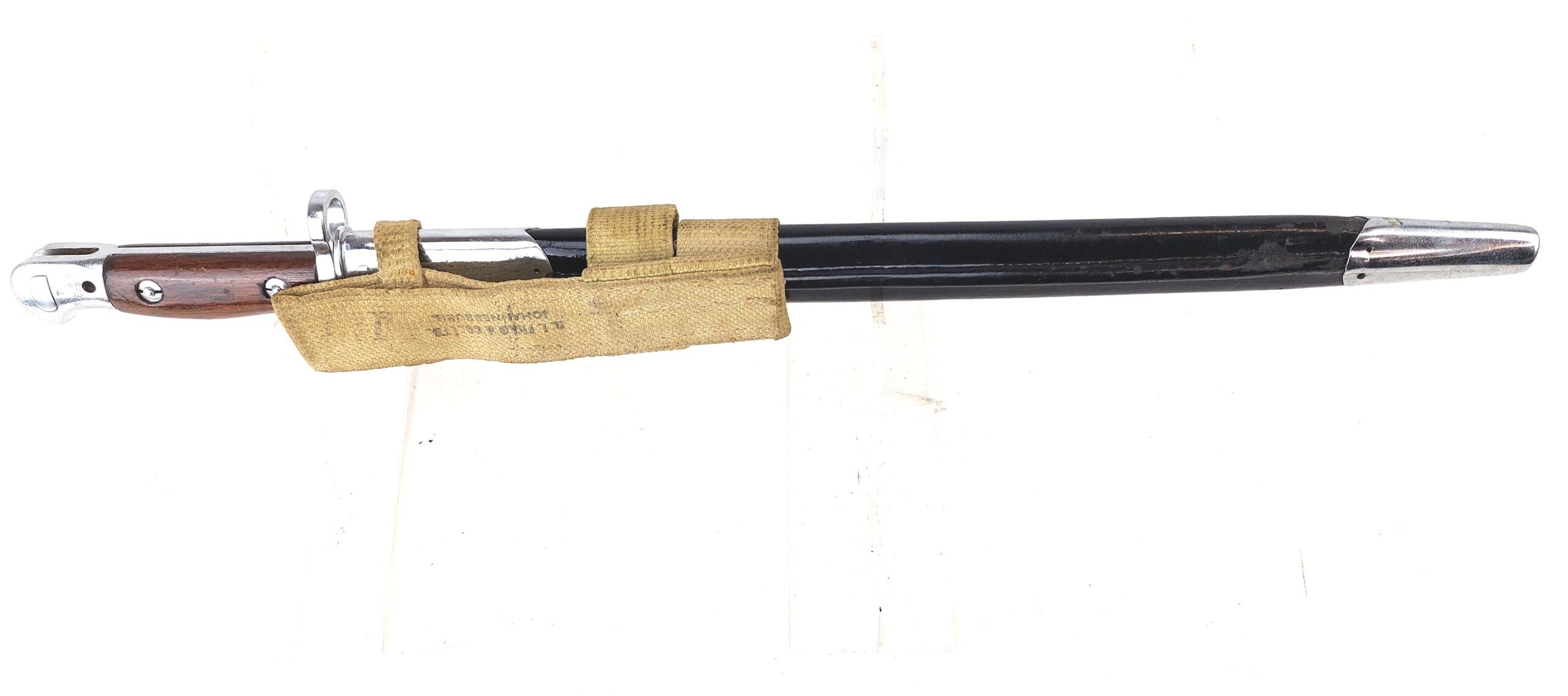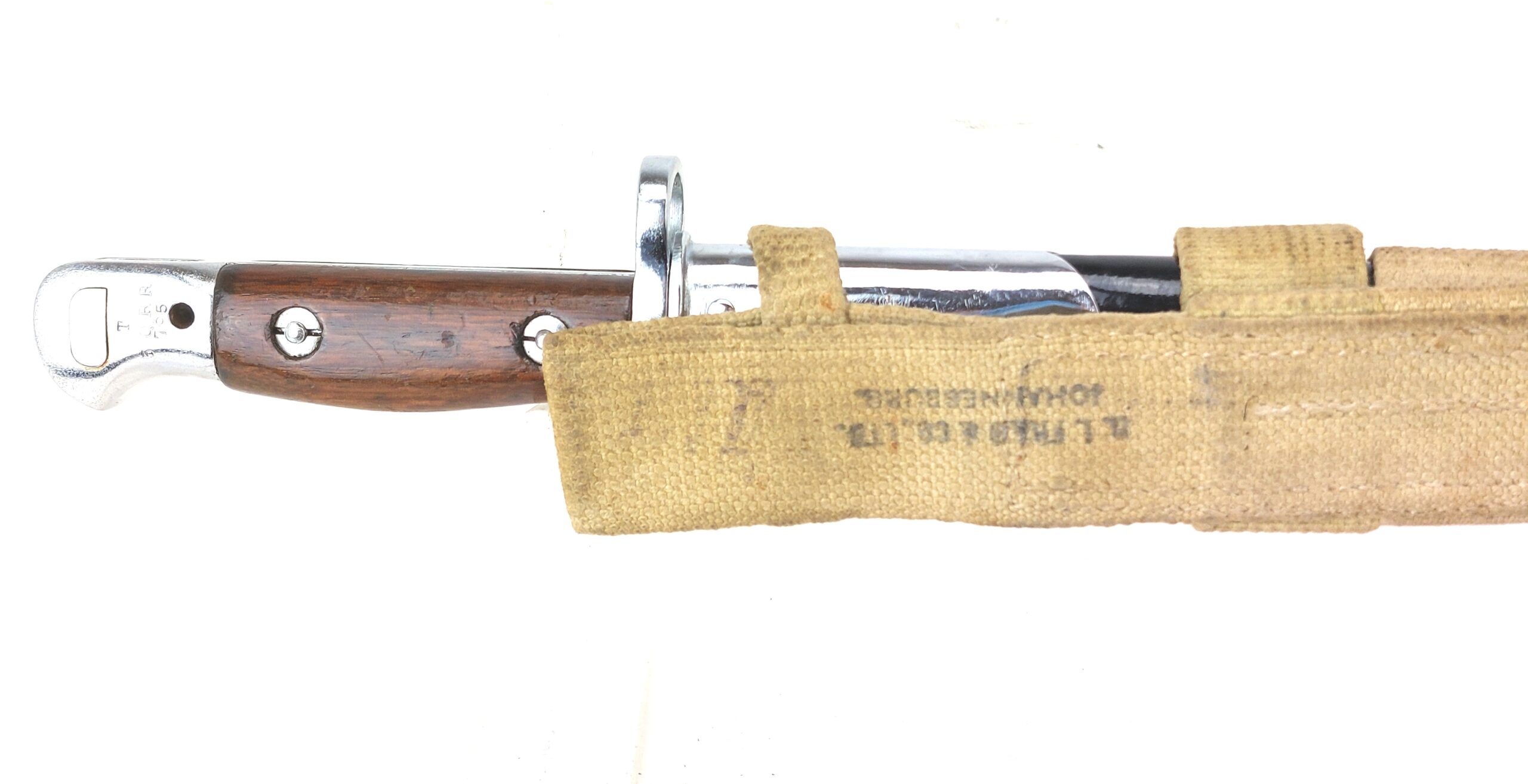*British, WW1, 1907 Dress Bayonet with Scabbard & Frog (Made in South Africa), Made by Wilkinson, dated 1918, with Regimental markings for Queens Royal Regiment*
Marked on ricasso: Crown over G.R. over 5 ’18, Over Wilkinson
Marked on obverse: War Arrow, Crown/T6/E, Crown OE/E, ’23, Crown/E
Marked on pommel: T, 5 QRR, 765
Marked on scabbard throat: 2R ORR, 590, 830
Marked on Frog: Johannesburg
Approximate Measurements: 56cm overall, 43.2cm blade
This is marked on one side of the ricasso with a crown cypher over the letters GR (GR – Georgius Rex was used in place of ER from 1910, the Latinised version of his name Edward Rex), the pattern “1907”, the month of manufacture “05”, the year “18” the makers name “Wilkinson”. On the reverse is the X’ bend-test mark, a broad arrow government acceptance mark, and one or more Royal Small Arms Factory appointed inspector’s marks.
The pommel regimental marking “5 QRR” may be for 5th Bn The Queen’s Royal Regiment. Raised in 1661, this was the oldest English line regiment in the British Army. It existed until 1959, when it was merged into The Queen’s Royal Surrey Regiment. Mobilised at the start of the First World War, all ranks of the 1/5th Battalion volunteered for overseas service.
The Pattern 1907 bayonet was supplied with a simple leather scabbard fitted with a steel top-mount and chape.
The Pattern 1907 bayonet, officially called the Sword bayonet, pattern 1907 (Mark I), was a British bayonet designed to be used with the Short Magazine Lee Enfield (SMLE) rifle. The Pattern 1907 bayonet was used by the British and Commonwealth forces throughout both the First and Second World Wars. The Pattern 1907 bayonet consisted of a one-piece steel blade and tang, with a crossguard and pommel made from wrought iron or mild steel, and a wooden grip secured to the tang by two screws. Originally the bayonet featured a hooked lower quillon intended for trapping an enemy’s bayonet and possibly disarming opponents when grappling. This was later deemed impractical and replaced with a simpler design from 1913.
*Condition*
The blade is in good condition commensurate with its age. Very bright metal work throughout. The press stud works well. The blade fits snugly in the scabbard. The scabbard is is in good condition with all stitching intact but some cracking to the patina. The metal mounts are both missing their fastening staple. Minor signs of wear and tear and a few dings. Please see photographs as part of the condition report.
JAQAOOXAGE_8857179952



